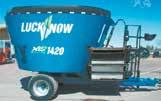


































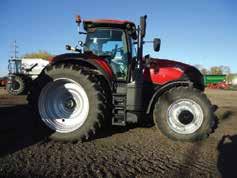





























































AMS Galaxy system allows more freedom for Junk family
By Abby Wiedmeyer abby.w@dairystar.comEPWORTH, Iowa — Jeremy and Melanie Junk have a lot going on.
Between milking cows, running an IBA dairy supplies
route, oating cows for other dairy farmers, being a dealer for AMS Galaxy robotic milking systems and raising children, any time they can save is a bonus.
Now that they are milking with a robot of their own, their saved time has increased.
The Junks milk 70 cows near Epworth with the help of their children, Keaton, Lexi and Ivan, and part-time employee, Amelia Frisch.
The IBA route takes Jeremy on the road ve days a week, serving 150 customers.
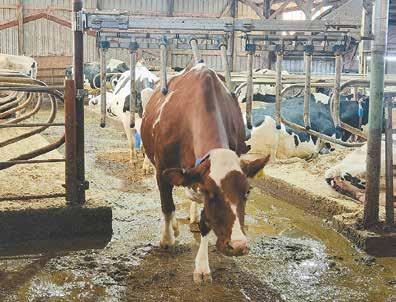


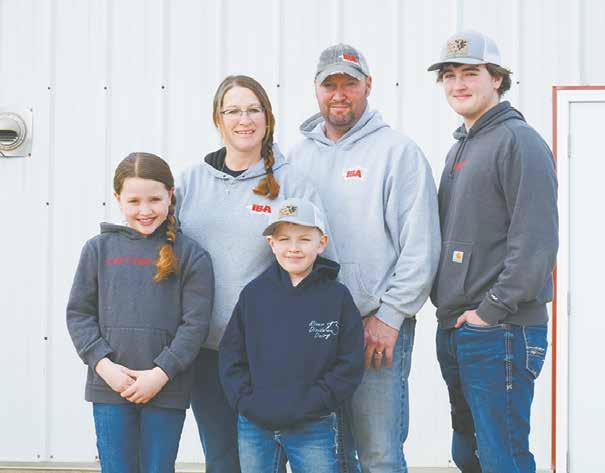
Melanie manages routes part time and helps Jeremy with big jobs. Although they have been Galaxy dealers for two years,
they did not start construction to install their own system until fall 2023. Startup was in January, and Jeremy said it has been a smooth transition.



“I’m not sure why it’s gone so well, but we’re happy,” Jeremy said. “It just keeps getting better; we’re really fortunate.”





















The Junks were milking twice a day in a double-6 parlor. When transitioning to the robot, they had two technicians help for ve days. Then, they hired a person to help during the day for another week.
Throughout the process, Melanie or Jeremy were on-site as well. They were warned that herds take weeks to adjust, but the Junks accelerated that process and stopped pushing cows aggressively after the rst two weeks.
“Our lives had to move on,” Jeremy said. “We put this in to milk the cows, and we walked away. I actually think that was the right thing to do.”
During the initial two-week transition period, the cows increased milkings to 2.7 times per day, and production went up to 89 pounds of milk per cow. Those milkings and pounds achieved did decrease when the cows stopped being pushed as hard, but the couple said they are ahead of where they were before they upgraded to robotics with an increase of 10 pounds per cow.
Jeremy said he has debated whether he should
“I’m not sure why it’s gone so well, but we’re happy. It just keeps getting better; we’re really fortunate.”
JEREMY JUNK, DAIRY FARMER
hire someone to push cows an extra time while they are away from the farm. But, he said the added labor cost would likely offset the benets.
“That’s the million-dollar question,” Jeremy said. “We’re content where we’re at and happy the cows are doing well.”
Melanie said aggressive cows tend to get more robot visits than timid cows. Part of the learning curve was getting a boss cow out of the way. Melanie said once the cows all go through a dry period and calve in again, the pecking order may establish itself better.
– Jose A.

The robot was installed in a space that was not being used before, in an area between the parlor and freestall barns. Cows are sorted with commitment pens that are equipped with nger gates. The gates can be locked to act as one-way gates, or they can be opened up. Melanie said the gates have been useful in processing fresh cows.
“We can scan them and make sure everything is in the computer while they’re waiting,” Melanie said. “Then, we make sure they get attached properly.”
Cows are monitored with activity collars, which is a new system for the family.
Turn to JUNK | Page 5


The robot room is in a pit. When a person is standing by the robot, the udder is torso-level, similar to a parlor. This makes treating and drying cows more user-friendly. With the startup being in winter, the Junks took precautions to prevent the robot from freezing. There is a heater in the robot room and an air curtain above the robot on the freestall side.
The air curtain blows air straight down. In winter, it keeps the warm air in and the cold air out. Melanie said she hopes it will keep the ies out of the robot room in the summer.
The robot is mostly run on electronics. The entry gates to the robot are powered by air, and the scrub brush has an air-blow option to dry teats after post dip is applied.
Cows are fed a total mixed ration once a day in winter and usually twice a day in summer. Barns are scraped with a skid loader twice a day. Chores consist of feeding, scraping, fresh cow management and fetching cows.
The Junks said all their cows have adjusted; the only fetch cows so far are fresh cows and rst-calf heifers. At one point only six weeks after startup, there were only two fetch cows.
“The cows adjusted better than we did,” Melanie said. “They have been super calm.”







“We
had another vertical mixer before but our Cloverdale is
- Peter Kimball Hidden Pond Farm, Baldwin,WI
RT Equipment Baltic, SD •605-359-0228
Farwest Equipment Dunn Center, ND 701-260-4959 Hefty Equipment Ashley, ND • 701-321-0203





















CHETEK, Wis. — Organic dairy farming is more than a chosen career pathway for Cheyenne Christianson. It is a lifestyle and mindset that has been fostered since childhood.



“We’ve always been part of what I call the quality food movement,” Christianson said. “Everything we do, everything we eat, everything we use is organic.”
With his wife, Katy, and their children, Christianson milks 80 cows on the family’s 325-acre Barron County dairy farm near Chetek.
Christianson has been shipping his milk to Organic Valley since 1999 and was an early leader in bringing a dedicated grass-fed route to the cooperative in 2014.
“We started on this farm in 1993, doing everything as organic,” Christianson said. “I was raised in that mindset. I detest chemicals on a level most people can’t comprehend. In 1995, we bought the land across the road from the farm and automatically began transitioning that to organic as well. … We’ve never looked back.”
The herd of cows that roam the Christiansons’ pastures is slightly different than one might expect. Christianson began his organic grazing herd by purchasing two small herds of Holsteins and has continued with the breed for more than 30 years.
“If we had known in the beginning that I would pursue grass-fed production, I might have started with a more typical grazing breed,” Christianson said. “They were big cows, and maybe that shouldn’t have worked so well. But, it didn’t seem like it mattered. They did what I wanted them to do.”
Christianson attributes his herd’s alignment to his goals with the approach he has taken to breeding
his cows. The herd has always been bull bred, using bulls Christianson retains from the cows that best meet his criteria.
“I like shorter, stockier cows and cows with lots of width,” Christianson said. “When we’re doing forage only, we want a really big barrel to pack the forage in.”
Christianson said he regrets not being more selective of the animals he kept in the herd. He said he wishes he would have culled more aggressively for traits that did not meet his standards, helping him reach his ideal cow faster.
Throughout his career, Christianson has found pleasure in continuing to push the edges of organic dairy farming with new concepts and practices.
Calves are raised on dedicated nurse cows and are not weaned until 5 or 6 months of age. Christianson said a nurse cow can typically raise two or three calves.
“Feeding calves is a big job,” he said. “Since we’ve started raising calves on nurse cows, we have had no issues with our calves. If the calf is born alive, we’re pretty much home free.”
During the winter, calves are kept in a section of the loang barn, and the nurse cows are turned in twice daily to feed calves. During the grazing months, Christianson manages his nurse cows and calves as a separate group, rotating on pasture.
One of the bigger changes Christianson has made was the transition to grass-fed production, one he called seamless.
“We haven’t fed grain since 1998,” he said. “We were grass-fed for a lot of years without the marketing. I didn’t think it was going to take that many years to get there. I knew that it was what I wanted to do, and we headed that way immediately. I believed the market would become a thing.”
Christianson said the health benets of grassfed milk production, both for cows and consumers, drew him to the idea.


“We have virtually no metabolic issues with our cows,” Christianson said. “When you take away the grain, you remove the heat source that causes acid.”
Christianson said his cows reap the benets of a lifetime of grazing and consuming forages with overall increased longevity as a trade-off for lower milk production. Christianson said he has had three cows pass 20 years of age.
“I’m a micromanager, and pasture is my thing,” he said. “That is what I do, and I do it really well. I spend a lot of time with the cows, watching and making sure they are getting enough grass and seeing what types of grasses they are liking.”
falfa scattered throughout. Christianson seeds ryegrass into the pastures as well.
“There isn’t much alfalfa out there right now,” Christianson said. “Most of it was killed off in 2019, and I have been hesitant to put more in. I could really see its absence last year during the drought.”
Despite the challenges presented by the weather, Christianson said the soil and grasses remain his true passion.
“It’s hard to imagine when we started in 1993, there were over 29,000 dairy farms in Wisconsin, and now, there are 5,500.”
CHEYENNE CHRISTIANSON, DAIRY FARMER
Grazing on the lighter, sandy loam soil that makes up his farm is not for the faint of heart, Christianson said.
“There has been a string of drought years: 2005 to 2009 was a rough stretch and then 2012 and 2013,” he said. “Now, we’ve had four years of drought again. Then, there was the ice and freeze kill in 2019.”
The pastures are a mix of many grasses: Timothy, orchard, quack and June grasses with red clover and al-

“The cows are part of the system,” Christianson said. “I just try to make sure they get what they need to do a good job. They are hard-core grazers. That is what paid for this farm.”
Christianson sees organic dairy farming as a way to preserve the small, family farm.
“It’s hard to imagine when we started in 1993, there were over 29,000 dairy farms in Wisconsin, and now, there are 5,500,” he said. “It’s an absolute disgrace. Fewer farms, a few big farms is not a solution for the future. Our economy was so much better when there were tens of thousands of dairy farms in our state.”






TheAirFLEXSDXfeaturessensorsandairsuspensionthatallowthe exheader toshavetheground,pickingupmoreofthecrop.It’slightweightyetdurable, sophisticatedyeteasytouse,allwhileintegratingcutting-edgeinnovation.Crafted onthefarm,you’llappreciatethecombinationofthoughtfuldesign,highperformance andsimplicity–andtheextramoneyitwillgenerate.


Fort Atkinson Hay Ft. Atkinson, Iowa • 563-534-7513
May 15, 19 loads
Rock Valley, Iowa • 712-476-5541
May 16, 70 loads
Large Squares
$115-147.50/ton 2nd crop
$67.50/ton Straw
$67.50-77.50/ton
Large Rounds
$110-157.50/ton
2nd crop
3rd crop
Grass
Mixed

$107.50-165/ton
$125-165/ton
$172.50/ton
$120-200/ton
$112.50/ton
$25-47.50/ton















Mid-May CME dairy prices were mostly higher, though the cheddar blocks back tracked from the previous week’s $1.98 per pound, ending seven weeks of gain and falling to $1.90 Thursday. They closed Friday at $1.9425, down 3.75 cents on the week but still 40.75 cents above a year ago.
The barrels saw almost daily gains and marched to $2.1250 Friday, up 21.25 cents on the week, highest since Oct. 20, 2022, 65.50 cents above a year ago and 18.25 cents above the blocks. Thirty-four cars of block were traded and 10 barrels.
Dairy Market News reported that there were multiple Midwest processing plants on either scheduled or unexpected downtime this week. The top of the spot milk price range was holding mid-week at 50 cents over Class III, while the bottom got as low as $4 under Class.
Cheese plants able to run full schedules were busy, and some added a weekend day to the schedule. Demand tones have shifted since mid-April. Cheddar and Italian style cheesemakers say they are turning down new orders. Barrel cheesemakers say that when a load is available on the spot market, customers are there.
“Cheese market tones are clearly nding some bullish tailwinds,” said DMN, though the price split between blocks and barrels “tends to create a lessthan-assured overtone.”
Cheese manufacturing is steady in the West, though some plants are bringing in additional milk to boost production. A few are running lighter schedules due to “less than stellar domestic demand,” DMN said. Class III spot milk loads are tightening slightly in parts of the region. Domestic cheese demand over recent weeks has been stronger and exports steady; however, with domestic prices shifting above international prices, that may change. Market tones have been bullish, DMN said, but “sentiments of industry participants are mostly neutral to somewhat bearish this week.”
Spot butter jumped 3.75 cents Monday, gave most of it back Tuesday, rallied Wednesday and closed Friday at $3.07 per pound, up 8 cents from the previous Friday and 61 cents above a year ago. There were 20 CME sales for the week.
Central butter makers report a similar market environment to previous weeks.
“Customers’ interests have picked up due to both seasonal trends and as a push to get ahead of continued bullish market prices,” DMN said.
Food service demand is not noted as robust but meeting expectations, while retail orders are ahead of previous years’ numbers, according to some contacts. Cream remains widely available, particularly in the southern area of the region; however, cream handlers relay that Class III interests have begun to pull from the cream supply. Butter makers do not expect near-term cream tightness. Bulk butter is available but not abundant. DMN said the current sentiment is, “How bullish and for how long?”
Western butter manufacturers are running strong schedules, with a few saying they will continue to do so ahead of the upcoming downtime in June for churn maintenance. Milk volumes are slightly tighter in some parts of the region, but milkfat components are up. Cream availability remains comfortable. Domestic butter demand is strong, with export interest moderate.
Grade A nonfat dry milk climbed to $1.1675 per pound Monday, highest CME price since March 12, 2023. It closed Friday at $1.1650, 1.25 cents higher on the week and 1.25 cents above a year ago. There were 30 sales on the week, 26 on Tuesday alone, the most in a single day since Feb. 3, 2021, when 33 sold.
“With June Class III now more than $5 per cwt above April, there may be growing incentive for U.S. buyers of fresh milk who can also use non-fat dried milk in the production of their products to buy NFDM more aggressively,” StoneX said.
Dry whey saw its Friday nish at 41.50 cents per pound, up 3 cents on the week and 15 cents above a year ago, with 12 sales for the week at the CME.
While dairy prices look hopeful, Rabobank’s quarterly report warns, “The initial surge in dairy prices seen in late 2023 and early 2024 was largely due to a period of restocking at lower prices rather than a robust uptick in consumer demand.”
The report suggests that “the global dairy market may experience a slower recovery than previously anticipated, particularly as China’s dairy imports remain lackluster.”
Rabobank analyst Lucas Fuess said in the May 20 Dairy Radio Now broadcast that low cheddar production and strong cheese exports tightened the U.S. market, but globally, we saw “relative weakness in
second quarter with a slight recovery into the second half of the year.” Some of that is due to “easy prior year comparable data,” he said. “It will be easier for countries like the U.S. and Europe to make gains,” Fuess said.
He said it follows a period of lower supply and weakened demand.
“Things are looking a little bit better into the second half of the year,” Fuess said.
But, he does not see a huge resurgence in buying from China, although Southeast Asian nations and Mexico are stepping up purchases.
When asked about the impact of avian inuenza, Fuess said Rabobank has not seen any huge impact. The cheese market gains were due more to other factors, though there may be a slight impact on milk supply, particularly in Texas.
There isn’t a lot of data on the demand side of things yet, he said.
“Anecdotally, there has been limited impact from consumers because of the inuenza, though it remains a cautionary watch factor,” Fuess said.
The U.S. Department of Agriculture raised its 2023 milk production forecast in its latest World Agricultureal Supply and Demand Estimates report and gave us a preview of what it expects in 2025. It also raised its estimate of the 2023 Class III milk price average and lowered the Class IV projection.
This month’s corn outlook is for larger supplies, greater domestic use and exports, and higher ending stocks. The corn crop was projected at 14.9 billion bushels, down 3% from last year’s record as a decline in area is partially offset by an increase in yield. The yield projection is 181 bushels per acre. Total corn supplies are forecast at 16.9 billion bushels, the highest since 2017-18. Total corn use was forecast to rise just under 1%. Food, seed and industrial use is forecast at 6.9 billion bushels. Corn used for ethanol was unchanged.
The outlook for soybeans is for higher supplies, crush, exports and ending stocks. The soybean crop is projected at 4.45 billion bushels, up 6.8%, or 285 million bushels, on higher area and trend yield. Soybean supplies are forecast at 4.8 billion bushels, up 8%. The soybean crush was projected at 2.43 billion bushels, up 125 million.
The latest crop progress report shows 49% of corn was in the ground as of the week ending May 12, up from 36% the previous week but 11% behind a year ago and 5% behind the ve-year average. 23% was emerged, 2% behind a year ago. 35% of the soybeans were in the ground, 10% behind a year ago but 1% ahead of the ve-year average. 16% were emerged, 1% behind a year ago.
Turn to MIELKE | Page 11






Dairy cow slaughter for the week ending May 4 totaled 49,000 head, down 4,300 from the previous week and 8,100, or 14.2%, below a year ago. Yearto-date, 1,171,000 have been culled, down 153,400, or 13.1%, from 2023.
The May 16 Daily Dairy Report said, “With dairy heifer inventories at multi-decade lows, producers have fewer opportunities to cull low-producing milk cows and replace them with heifers that are ready to enter the milk parlor. Producers who don’t want to pay sky-high prices for replacements can keep more low-producing cows in the herd, effectively lowering cull rates, or milk fewer cows.”
This week’s livestock, dairy and poultry outlook mirrored the milk price and production projections in the May 10 WASDE. The outlook shows the 2024 dairy herd forecast was raised 10,000 head to 9.345 million.
In response to better-than-expected average milk yields in the rst quarter and overall lower expected feed costs, the 2024 milk-per-cow forecast was raised to 24,330 pounds, 85 pounds above the previous forecast, thus the increased projection in milk output.
The 2025 dairy herd was projected to increase by 20,000 head from 2024 and to average 9.365 million. The forecast for average milk per cow is 24,485
pounds, up 0.6%.
“The projected growth reects expectations of improved farm margins through 2024 that will affect 2025 production levels,” the report said.
As of May 14, highly pathogenic avian inuenza had been conrmed in nine states and 46 dairy herds, according to the outlook.
“Mandatory testing for lactating dairy cattle is required prior to interstate movement. Additional guidelines were issued by USDA’s Animal and Plant Health Inspection Service May 8. USDA has found that the virus can spread in several ways: within the same dairy herd, when dairy cattle change location and from dairy to poultry. In some cases, dairy cows tested positive without showing any symptoms. The affected cows recovered within several weeks.
“Pasteurization has continually proven to inactivate bacteria and viruses and hence reduce the risks to human health. Moreover, the U.S. Food and Drug Administration continues to advise against the consumption of raw milk.”
For further updates, visit the APHIS or FDA websites.
Cooperatives Working Together members accepted 16 offers of export assistance this week that helped them capture contracts for 2.9 million pounds

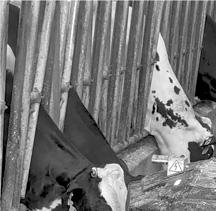



The Lehner Dairy has been in operation for about 1 1/2 years. They currently milk 120 head. Mike researched the GEA Feed Pusher online, then contacted Jon at Centre Dairy about incorporating equipment in his operation. “Jon and Centre Dairy were easy to work with and had the equipment fine-tuned in about a week after installation. The Pusher is easy to operate and runs 19 times

of American-type cheese and 3.1 million pounds of whole milk powder. The product is going to customers in Asia, Central America, the Caribbean, Middle East-North Africa and South America through September.
This week’s Global Dairy Trade Pulse auction saw 3.75 million pounds of product sold, down from 3.79 million April 30. 97.2% of the total offered was sold. There were 498,240 pounds more instant whole milk powder and 597,447 pounds less regular whole milk powder sold versus the last pulse and 59,524 pounds more skim milk powder on offer was sold.
HighGround Dairy said this was the largest volume of instant whole milk powder ever sold on the GDT Pulse platform.
The International Dairy Foods Association announced that the Capitol Hill Ice Cream Party will celebrate its 40th year June 12. As Washington’s most popular warm weather celebration, the party, on the National Mall just outside the U.S. Capitol Building, is one of Washington’s most anticipated for professionals working in food and agriculture, bringing together thousands of guests, including members of Congress and ofcials from the executive branch, in a fun event showcasing America’s favorite frozen treats.

210
3 point, front fenders, 3 point, 3 remotes, 19 speed powershift, New LED lights, Fresh service including all new transmission and engine oil, new filters and coolant, New Trelleborg tires, Very nice!! Sells w/ride and drive; John Deere 4455 tractor, 4WD, CAH, 15k hours, Solid tractor; John Deere 4230 tractor, 2WD, 6728 original hours, Quad range transmission, 4 post canopy, Good working condition!; White 2-70 tractor w/loader, 2WD, open station, runs and drives nice; Skidsteers
John Deere CT332 track loader. 5200 hours, open station, hydraulic quik-tach, new tracks, new drive motor. Nice machine!; Gehl V330 skid steer, 2015 model, 2960 hours, CAH, pilot controls, 2 speed, hydra-glide, aux hydraulics, power quik-tach, new 8ft bucket, 1417.5HD BKT tires, Nice!; Mustang 2200R skid steer, 2017 model, CAH, 2 speed, 14k hours, new 72” bucket, Runs and drives as it should; New Holland 170 skid steer, 4800 hours, open ROPS, Good solid unit!; Forage Handling
John Deere 702 rake, 10 wheel, Good working condition, Has seen some acres; New Holland 255






Summer Hammann
Parents: Scot and Becky Hammann Barron, Wisconsin

Tell us about your family’s farm. I was raised on my family farm where we milk 40 registered Holstein and Jersey cows. We milk in a tiestall barn. My parents, three siblings and grandpa are involved in the farm. Along with the dairy herd, we raise beef, sheep and turkeys, and we farm 500 acres.
What are your responsibilities on the farm? My responsibilities on the farm include feeding heifers and calves and helping my mom milk. I also work with the show animals to get them ready for shows through the spring, summer and fall. My favorite chore is working with the show cattle and seeing them improve throughout the season as they get on a program.
What is your favorite memory of living on a dairy farm? Working with my family to build our genetics and watching cattle develop to their full potential.
What lessons have you learned from living on a dairy farm? I have learned many life lessons living and working on my family’s farm like developing my work ethic and determination and learning how to deal with adversity. I’ve learned that no two days are similar and to persevere when something does not go the way you plan.
What are your plans going forward? I plan to continue working alongside my parents and siblings, developing the cattle within our herd. I will attend college next fall at the University of Wisconsin-Madison for dairy science and agricultural business management. I plan to work in the dairy industry after college and nish out my junior years in the show ring.
Brock Sluga
Parents: Matt and Crystal Sluga Whitehall, Wisconsin

Tell us about the farm you work for. Giese’s Family Farm is managed by brothers Ken and Gary Giese. Ken milks about 105 cows in his at-barn parlor. I have been working part time at the farm since 2020. However, my time became more consistent when the barn blew down in a storm in December 2021. I was going to help milk and feed whenever I had time around my busy school and sports schedules. During the summer of 2022, I became a full-time farm hand. During the 2022-23 school year, I was part time whenever I could help. At the end of my junior year, I signed up for a youth apprenticeship. This allowed me to go to work and get paid during school hours during my senior year.
What are your responsibilities on the farm? Some of my responsibilities at work include feeding, milking, scraping manure and any kind of eldwork or operating that needs to be done. My favorite job is probably raking hay in the John Deere 4640 with the Vermeer hydraulic rake.
What is your favorite memory of working on a dairy farm? My favorite memory was getting to watch the sunrise every morning during chores.
What lessons have you learned from working on a dairy farm? While working on the farm, I have learned how to be a hard worker. I have also learned that paying attention to small details may save you time in the long run.
What are your plans going forward? After high school, I will be starting a job at J&R Underground LLC as well as coming back to help on the farm when I have time. I enjoy being on the farm and doing things with the cows and tractors. I never see myself fully getting away from the farm and agriculture in general.

Jill Evers
Parents: Philip and Kay Evers Kellogg, Minnesota
Tell us about your family’s farm. Evers Family Farms is milking around 3,000 cows in a double-48 parallel parlor. The herd is mostly Holsteins, but there’s a few Jerseys and other breeds mingled in. All the calves are under one roof in the calf barn. We haul our milk to Associated Milk Producers Inc., mostly to Blair, Wisconsin. We raise our heifers on many farms around the main farm. Many of my cousins and some of my siblings work on the farm, but there are still quite a few hired hands who aren’t family. My dad and his three brothers work together and are the main four in charge.
What are your responsibilities on the farm? To take care of heifers, which consists of feeding, scraping, bedding barns, running foot baths, vaccinating and sorting for pregnancy checks. I mix feed for 1,000 head a day with my brother. On a normal day, I’ll go to two farms and take care of cattle. My favorite thing on the farm is simply working with the cattle alongside my family. Sometimes Dad will have me help for eldwork. I’m more of a cattle person, but I don’t mind getting in the eld to change things up.
What is your favorite memory of living on a dairy farm? When I was younger, I would check cows in the pasture with my dad and brother on the four-wheeler. Going out to give Dad supper and riding along in whichever equipment he was in will always be a core memory too.
What lessons have you learned from living on a dairy farm? To name a few, you learn what responsibility means at a young age. Showing up every day to get your chores done is one way. Not everything goes the way you would like it to go, but you have to accept that and change accordingly. You work for what you get. Nothing is given; it’s earned. Getting along can sometimes be challenging, but you have to work it out in order for things to progress. I wouldn’t have wanted to grow up any other way.
What are your plans going forward? I plan to stay on the farm. I plan to start taking over little by little and keep the farm going with my family.
Turn to SENIORS

UW-Platteville’s School of Agriculture offers...
• Courses that focus on Farm to Fork concepts for a better producer, consultant, and consumer
• Opportunities for competition with other dairy schools through Pioneer Dairy Challenge Team & Pioneer Dairy Judging Team
• A wide variety of industry support and resources available to Dairy Science majors through internships and other networking opportunities
• Agriculture-focused Faculty-Led Education Abroad with Service Learning Components Dairy Science major 50+ students & growing!
• Agribusiness
• Ag Engineering Technology
• Spanish
• Soil and Crop Science



Tell us about your family’s farm. I live on my family’s dairy farm where we milk 2,250 Holsteins. The farm is owned by my dad and his two brothers. They are the third generation of owners of the farm. Since we expanded in 2015, we have been milking three times a day in a 60-stall rotary parlor. We have around 35 employees, 12 of which are family members.
What are your responsibilities on the farm? I primarily help to feed the newborn Holstein and beef calves. Our newborn calves are kept in a transitional pen for one to four days after they are born, before they are either taken to our heifer barn if they are Holsteins or sold if they are beef. During this time, I also help to monitor for and treat diseases, ensure the pen is clean and transport heifers to the heifer barn. I also help with eldwork during harvest season. In the eld, I merge hay, drive silage truck, and spread fertilizer and manure. My favorite is merging hay while we are harvesting alfalfa.
What is your favorite memory of living on a dairy farm? My favorite memory on the farm was swimming in our new manure pit before we started using it. When we expanded in 2015, we poured an in-ground manure pit that
we would not start using until the barn was nished and there were cows in it. So, for about three months, the pit was clean and collecting water every time it rained. Logically, my family and I would go up to the pit occasionally and swim in the rainwater that had accumulated. Before we started using the pit, it had accumulated somewhere around 2.5 feet of water to swim in, which was all we needed to be able to have a good time together.
What lessons have you learned from living on a dairy farm? Growing up on a farm has taught me a large variety of lessons and skills. Being that I get to work so closely with my family in the calf barn every week, I have grown to appreciate all that we do for each other and have been able to develop a close relationship with them. I have also developed a strong work ethic and good sense of responsibility since there are many things that need to be done around the farm every day in order for everything to run as smoothly as possible.
What are your plans going forward?
Next year, I will attend the University of Wisconsin-Madison to pursue a degree in either history or political science, with hopes to become either a high school social studies teacher or lawyer. After college (and maybe law school), I hope to return to the Menomonie area to pursue one of these two careers.
Turn to SENIORS




Savana Mata Spring graduate in dairy science, agricultural business Northcentral Technical College

How did you choose Northcentral Technical College to further your education? I am from southern California. The closest I had ever been to agriculture was the dairy section of the grocery store. I attended Loyola Marymount University, majoring in biology and philosophy, with plans to go into neuroscience. I met someone from a dairy farm. After learning from them, I decided that after I graduated I was going into dairy. A staff member gave me a tour at NTC. I realized almost all of the people teaching had farmed themselves. I chose NTC because I would be learning directly from the source. That tour was the rst time I had seen a cow milked by a robot. I had no idea cows were being milked by robots.
How has NTC facilitated your learning? Before I started classes, the school helped me get a job at Miltrim Farms Inc. I had never touched a cow or even been close to one, and then, I was in this place with 3,000 cows. I will be forever grateful for them allowing me to come in with zero experience and helping me follow my dreams by teaching me about the dairy industry. I was learning about milking cows with robots and in a parlor, but I wanted to learn about milking in a tiestall barn. I made a connection that helped me get hired by the Blaubach family. They milk 160 cows in a tiestall barn.
How have extracurricular activities added to your learning experience? I have been involved in the National Professional Agricultural Student Organization and have taken part in the dairy specialist competition. Everyone was so supportive, especially the instructors. They kept telling me it was just a learning experience, to study and practice and see what I could do. I was so excited to see my progression — how much I had learned in the rst semester at NTC to do so well in the rst competition.
How has NTC prepared you for your career? I will continue to work at Miltrim Farms and at the Blaubach family’s farm. I also work at Merrill Equipment Company. Since I am new to the dairy industry, there is so much to learn, and I want to learn every aspect. I have loved everything, which is a problem because I cannot pinpoint what exactly I want to do in the industry. By working at all three businesses, I can learn so much. I have also been working with Marathon County Partnership for Progressive Agriculture, setting up the June dairy breakfast, so I have been learning about connecting with consumers. My schedule is hectic, but I’m grateful to continue working with all these places. I learn so much from each, and I would not want to give that up.
What would you tell a perspective student? NTC is a great college for people who want to learn quickly and be handson. It is great if you are worried about a busy schedule and being able to work alongside going to college. You have to take an internship; a lot of the classes you take are in the barn or the eld, seeing and doing things.

Tell us about your family’s farm. We have a 60-cow dairy, consisting of mostly grade Holsteins with a handful of registered colored breeds. We milk in a tiestall barn with automatic takeoff units.

What are your responsibilities on the farm? My responsibilities on the farm are milking, feeding the calves and goats, and occasionally feeding the cows. My favorite job is feeding and taking care of the newborn calves.
Jaden DreierParents: Randy and Becky
DreierNorwalk, Wisconsin
Tell us about your family’s farm. We milk 75 registered Holsteins twice a day in a tiestall barn. We also have 60 youngstock split on two farms. My dad, mom, sister, Ashley, and I run the farms.
What is your favorite memory of living on a dairy farm? My favorite memory is picking out my rst show heifer when I was old enough to show at our county fair.
What lessons have you learned from living on a dairy farm? Working on a dairy farm has taught me patience and how to properly care for animals.
What are your plans going forward? I plan to take over my parents’ dairy farm and have a herd of registered dairy cattle and a small herd of Nigerian Dwarf goats.

What are your responsibilities on the farm? My responsibilities are feeding youngstock and dry cows before school. After school, I also milk and bed cows. My favorite job is eldwork.
What is your favorite memory of living on a dairy farm? My favorite memory is learning how to drive tractors and being able to do eldwork myself.
What lessons have you learned from living on a dairy farm? I have learned that I don’t like xing equipment, but sometimes, it is necessary.
What are your plans going forward? After graduation, I plan on returning to the family farm, but I also want to leave my options open to other ag-related things.
Breanne Zawislan Parents: Shawn and Bridget Zawislan Unity, Wisconsin
Tell us about your family’s farm. My dad is the owner of our family farm, Zawislan Dairy, and we are a 130cow lactating dairy herd. The cows are milked in a tiestall barn, and my family members are our only workers. Most of our heifers are raised at home, and we have many facilities for each age of our heifers.
What are your responsibilities on the farm? I have become an industrious, fast-learning, experienced farm worker. My duties include the maintenance of buildings, herd health, feeding and providing comfortable housing conditions for all cows while also milking cows daily and helping with unpredictable necessary tasks each day. My favorite chore is everything that goes along with caring for my fair heifers.
What is your favorite memory of living on a dairy farm? My favorite memory is sharing memories with my siblings while milking cows and laughing.
What lessons have you learned from living on a dairy farm? Working on my family’s dairy farm both morning
and night, before and after school, has become a routine in my life that has had its peaks and valleys. I have acquired time management, adaptability and problem-solving skills that will help me uctuate in my life. I was granted experiences and leadership opportunities that many kids may never get to experience. My life growing up on a farm and participating in agriculture-related activities through school has shown me a lot about agriculture. It has shown me what makes up the industry as well as what is needed to keep it thriving. Agriculture has greatly impacted my life and has taught me to become a humble person. Without it, I would not be where I am today to have the foundation that is setting me up for success.
What are your plans going forward? I am enrolled and will be taking classes at Northcentral Technical College, working toward an associate degree in dental hygiene. I will hopefully be able to work at a dental ofce soon after graduating college. Although I am not continuing my education in agriculture, it will always be a part of my life.
Jewett represents fourth generation of cheesemakersBy Amy Kyllo amy.k@star-pub.com
NORWOOD YOUNG AMERICA, Minn. — Cheese runs in Jacob Jewett’s veins. A self-proclaimed “fourth-generation cheese head,” he is continuing his family’s legacy of cheese making.
“I’ve always been a fan of cheese,” Jewett said.
Jewett is a production supervisor at Bongards, overseeing about 35 employees on the process cheese lines.
Jewett is one of three members of his family working at Bongards. His father, Brent, works as a plant manager in Norwood Young America, and his brother, Mitchell, works in purchasing and scheduling.
Jewett was inspired to be a cheesemaker from connecting with his family.
“We’ve been a very family-oriented family our whole life,” Jewett said. “I just saw what success my dad had in the industry.”
In his role, Jewett assists production staff in keeping on schedule and changing over the machines for products. He focuses on keeping employees safe, making sure the food is manufactured safely and maintaining their production rate.
“If there’s an issue or something, I nd myself getting pulled to that,” Jewett said. “You gravitate toward the issues to try to keep everything running smoothly. ... Getting that (conict) res-
olution and things get back on pace, or people are back happy again, those are the satisfying things in my job.”
Jewett’s production lines make process cheese slices and loaves. One of the main varieties they produce is American.
“It’s cool to see how you can make a natural cheese into the processed cheese and basically give it similar characteristics of what a natural cheese would be,” Jewett said.
The rst cheesemaker in Jewett’s family was his great-grandfather, Floyd. Floyd owned and operated cheese factories near Richland Center, Wisconsin. Later in his career, he worked as a eld representative for cheese factories.
Two members of the next generation of Jewetts also became cheesemakers. Jewett’s great-uncle, Lee, worked in a cheese factory for 50 years. His grandpa, Marvin, was more adventurous than his brother, Jewett said. Marvin worked at many cheese factories across the nation in Wisconsin, Iowa and California before landing at Bongards, in Minnesota, in 1986. Jewett’s dad joined Bongards at the same time.
Growing up, when the Jewetts needed to do a science project for school, their dad helped them make cheddar cheese on the stove. Jewett said the rst time he was part of it, he was 8. Recently, Jewett said his dad and brother made stovetop cheese with Jewett’s 3-year-old nephew.
“We’re getting some practice in, so we can later show our kids someday when they’re older and keep that making of the cheese on the stovetop tradition going,” Jewett said.
On childhood trips to visit family, Jewett said cheese was part of the trip.
“Going across the countryside of

Jacob Jewe holds cheese May 15 near a process cheese line at the Bongards plant in Norwood Young America, Minnesota. Jewe is a fourth-genera on cheesemaker and one of three members of his family working for Bongards.
Wisconsin nding new cheese plants, ... (that) was one of my fondest memories,” Jewett said.
Jewett’s rst job with Bongards was a part-time position in high school.
“The (cheese making) process to me ... was very cool,” Jewett said. “I was pretty amazed at what the manufacturing and production of food was. It’s a big spectrum, and I just thought it was interesting.”
Jewett attended South Dakota State University for dairy manufacturing.
“I thought, ‘Well, I already know quite a bit about (cheese making),” Jewett said. “(I thought) I would have success doing it. ... I really liked the industry, and it’s been treating me well.”
During college, Jewett completed two internships with Bongards. In the future, Jewett said he hopes to advance within Bongards. “I don’t plan on leaving anytime soon,” Jewett said. “Bongards has been good to me, and I like what I do. I like the atmosphere I work (in).”


Harlee Harbaugh Parents: John and Jeri Harbaugh
Coon Valley, Wisconsin
Tell us about your family’s farm. In 2017, my family sold our milking cows, and we decided to keep some of the herd and use them for showing. We raise our show heifers on a small pasture that we rent outside of town, and our milking cows are held on a large dairy in Camp Douglas, Wisconsin.

Isaac Jakobi Parents: Denny and Tracy Jakobi Granton, Wisconsin

Tell us about your family’s farm. We farm about 600 acres and milk 75 cows in an 8-stall stepup parlor with a sand-bedded freestall barn. I also own 20 beef cattle that I keep at my grandparents’ farm.
Logan Brand Parents: Steve and Mary Brand Ellsworth, Wisconsin

What are your responsibilities on the farm? My jobs include breaking heifers to lead, washing, tting, feeding, watering and showing cattle. My favorite job is leading and showing cattle.
What is your favorite memory of living on a dairy farm? My favorite memory is working with my Jersey cow and prepping for shows.
What lessons have you learned from living on a dairy farm? It takes dedication to get up every day and take care of the animals and do the job you love.
What are your plans going forward?
I will attend Southwest Wisconsin Technical College, seeking a degree in dairy and livestock management, with plans to become an articial insemination technician and nutritionist.
What are your responsibilities on the farm? I milk cows, help with eldwork and manage my custom baleage business. My favorite job is doing eldwork.
What is your favorite memory of living on a dairy farm? My rst calf from my beef herd.
What lessons have you learned from living on a dairy farm? The value of hard work.
What are your plans going forward? In addition to high school, I am also graduating from Mid-State Technical College in the farm operations program. I will continue to run my baling business, help on my family’s farm, raise my beef cattle and hope to own a farm someday.
Tell us about your family’s farm. I grew up on my parents’ dairy farm which evolved to milking 1,200 cows in a double-16 parallel parlor. I am the youngest of four kids, and we all worked on the farm while we grew up. I also milked cows and did various farm chores on two neighboring farms while in high school. One had a parlor and milked 150 cows, and the other milked 60 cows in a tiestall barn.
What are your responsibilities on the farm? I milked cows, helped feed and care for calves, and did various herd health tasks. My favorite job is milking cows. I love milking cows because it is relaxing to me.
What is your favorite memory of living on a dairy farm? Getting to milk cows with my brother and making memories with him in the parlor.
What lessons have you learned from living on a dairy farm? Things go wrong that you can’t always plan for, so you need to go with the ow. This experience has helped me to be more exible in general.
What are your plans going forward? I will attend Iowa State University for agricultural business.
Carmen Haag Parents: Rob and Becky Haag Watkins, Minnesota

Tell us about your family’s farm. I work for Kuechle Dairy. My mom, two of my aunts and an uncle all own the farm together. There’s also four people who are hired help along with some of my cousins and my grandma and grandpa. We milk around 240 cows and raise our calves, crops and steers. We milk in a double-12 herringbone parlor. We recently got a manure robot that is working very nicely.
What are your responsibilities on the farm? My main responsibilities on the farm are milking and random jobs like feeding calves or eldwork.
What is your favorite memory of working on a dairy farm? Having water ghts with my brother using the hoses in the parlor.
What lessons have you learned from working on a dairy farm? Quality over quantity.
What are your plans going forward? I plan to study aviation at South Dakota State University.
Midwest Machinery Co. wants to help young mechanics enter the industry. They offer paid internships to two separate age groups of young adults.
“We know that by getting kids interested younger and getting them into a company, hopefully we can have them enjoy working with us and get to know our culture,” said Heather VanZee, human resources director with Midwest Machinery. “It gives them a head start on their career.”
VanZee has been working for Midwest Machinery for a decade.
Midwest Machinery has an internship for students 18 years and older. Through this internship, a student receives a sponsorship for the John Deere Tech Program. They also have an internship for students ages 16-18 that is designed to expose young adults to the industry.
“They can come in and get experience and see what it would be like,” VanZee said. “Would they want to do this for a job and what every day would look like for them.”
Students may hear about the internships from schools while others stop in at a dealership and speak to a manager. They are also able to apply on the company’s website and a corporate service manager will reach out.
The corporate service managers will give them the details and make sure it is a mutual t.
“If they are interested, then we get the paperwork signed,” VanZee said.
During the beginning of an internship, interns observe until they are comfortable with being hands-on.
“You’re going to get your hands dirty as soon as you can possibly get your hands dirty,” VanZee said. “We encourage throwing on that uniform and getting dirty.”
VanZee said there are several colleges John Deere partners with to offer advanced technician training. In order to get into the program, a student has to be sponsored by one of Midwest Machinery’s 30 dealership locations.
As students go through college, they learn handson skills at Midwest Machinery on their days off from school.
“We try to give them as many different types of machinery as much as possible, so if we can show them everything from a small utility tractor to a combine and bigger,” VanZee said.
Throughout the internships, students are exposed to different aspects of diesel engines, hydraulics and more. They also have interns who focus on small engines in school and at a dealership.
Midwest Machinery does not have a set limit of interns for each dealership.
“We don’t think we can have too many interns,” VanZee said.
They gauge the number of interns by the location and what they can handle depending on available managers.
They also have a dedicated aftermarket support specialist who answers questions.
“We make sure they are getting the attention that they deserve,” VanZee said.
The aftermarket support specialist also serves as a connection between the school and the business.
After the students complete college, they may have the opportunity to become a Midwest Machinery employee. If they are hired full time, they are eligible for tuition reimbursement, including books and oncampus housing.
“We hire on at least 98% of them to become full-

time employees,” VanZee said. “The longevity of those employees really pays off in the end for both us and the student.”
Parents: Mike Wielenberg and Sarah Maland
Long Prairie, Minnesota

Tell us about your family’s farm. My uncle, James, owns a dairy farm near Clotho, Minnesota. We milked around 100 cows in a double herringbone parlor until this past July when we sold our cows. We are raising the youngstock and selling them as springer replacement heifers. This farm used to be my grandparents’. When I was young, we basically lived on the farm. My grandma helps as much as she can, but my grandpa has passed. My dad, my uncle, Neil, my brother and I often help on the farm whether it’s eldwork, moving heifers or xing equipment. I also own a few heifers. When I was around 10, my dad bought me my rst Jersey calf. My dad and I starting growing a Jersey herd, which we housed at my uncle’s farm. We had around 55 head before selling the cows. I use my cattle to show in 4-H along with a few of my uncle’s.
What are your responsibilities on the farm? Helping wherever help is needed. I usually help with things like feeding calves, moving heifers, servicing heifers or sorting heifers for pregnancy checks, and I help make and deliver lunches or dinners for the boys while they do eldwork. My favorite chore is anything I can do with my 4-year-old sister, because she really loves the cows.
What is your favorite memory of living on a dairy farm? One Saturday night, I was milking cows with my dad, brother and boyfriend. A cow had an abscess on her side, and it was oozing and looked like it needed attention. I grabbed a needle, syringe and hydrogen peroxide and went to work. I poked at the hole it was oozing from and got it opened so the pus could drain. I helped push the uid out to relieve the pressure. My brother and boyfriend were watching and gagging because it smelled so bad. I stood there with a smile on face, not bothered at all by the smell. After I nished ushing the pocket with hydrogen peroxide, I had the abscess uid on my clothes, my boots, the oor in the parlor and my milking gloves, and the boys where petried by how the smell didn’t bother me. I laughed so hard I cried, because they were gagging at a smell that didn’t bother me. My dad also made fun of them the rest of the night.
What lessons have you learned from living on a dairy farm? I have learned a lot of lessons about responsibility, respect and work ethic. I have also learned that you have to work hard for what you want to achieve your goals. I also learned what I want to do with my life while working on the farm.
What are your plans going forward? I will attend the University of MinnesotaCrookston to major in animal science and complete my pre-veterinary medicine courses. I am hoping to transfer to the University of Minnesota-St. Paul veterinary school and get my Doctorate of Veterinary Medicine. I want to move somewhere rural and work as a large farm animal veterinarian.

Tell us about your family’s farm. I have grown up on my parents’ farm, Wilbar Dairy. We milk 300 registered Holsteins and Brown Swiss with the prex Wilbar. Cows are housed in sand-bedded free stalls. We milk in a double-8 step-up parlor. It takes about three hours to milk twice a day. We raise our youngstock and average 300 head of youngstock at all times. My parents and older brother, Brice, and younger sisters, Brenna and Blair, and I are the work force along with two fulltime milkers. I have enjoyed showing our Brown Swiss cattle in 4-H at the county fair and Wisconsin State Fair.
What are your responsibilities on the farm? I relief milk, scrape barns, pull calves when needed, help my mom move calves and heifers, relief feed calves for my mom or help her get done early so she can get to my sisters’ sporting events. Occasionally, I feed a newborn calf when needed. I relief feed for my dad and haul manure. Along with Brice, I do tillage and planting. Brice and I then move on to cutting, baling and wrapping hay as we mostly feed
baleage. In fall, I help haul corn silage, occasionally run the pack tractor and always help cover the bunker silo. In the past few years, we have acquired newer tractors, and I really enjoy playing with GPS. If I am available on herd check days, my mom will put me to work sorting cows for the veterinarian and giving shots.
What is your favorite memory of living on a dairy farm? The days when all six of us are working together, whether it be milking or in the elds. Recently, dancing in our new shop to “Pocketful of Sunshine” comes to mind. I also love the ice cream runs after milking Sunday nights.
What lessons have you learned from living on a dairy farm? Growing up on a farm has taught me the basics of life. I have learned the cycle of life, how to care for animals and the land. I have learned responsibility, exibility and team work.
What are your plans going forward? After graduating, I am attending Fox Valley Technical College and pursing a degree in precision technology and agronomy. Farming is becoming dependent on precision technology in order to stay sustainable, and I hope to bring what I learn back to the family farm and to help other producers become more sustainable.
Emi McCarville
Parents: Eric and Jackie McCarville Mineral Point, Wisconsin

Tell us about your family’s farm. I help milk on my family’s dairy farm. We milk about 60 cows in a stanchion barn. I milk with my parents and my grandpa.

The agriculture field is full of new opportunities and innovations. Evolving technology impacts the industry and the family farm, from robots in the barn to GPS and the science behind balanced nutrition. Hands-on learning with NICC at the world-renowned Iowa Dairy Center positions you to impact the future.
Explore training and careers in:
•Agronomy and Crop Science
•Agriculture Finance
Take the Next Step.
•Conservation Agronomy
•Precision Ag and more!
Schedule Your Visit and Apply Today!

What are your responsibilities on the farm? I am responsible for feeding calves morning and night along with helping milk cows and feed heifers.
Gabbie Neumann
Parents: Bjorn and Jamie Neumann Osceola, Wisconsin
What is your favorite memory of living on a dairy farm? My favorite memory is being able to buy my own heifers, watching them have their own calves and having my herd expand.
What lessons have you learned from living on a dairy farm? I have learned that hard work goes a long way. Many kids don’t understand hard work and all the work that goes into farming.
What are your plans going forward? I plan to attend the University of Wisconsin-Platteville for agriculture education and a minor in agribusiness.
being able to show my cows at county and state fairs. It is so fun to be able to compete with friends and family.
Tell us about your family’s farm. I live on a family farm that milks around 200 dairy cows. We have Holsteins and Red and Whites along with Brown Swiss and a few Jerseys. We milk our cows with four DeLeval robotic milking units.
What are your responsibilities on the farm? My jobs on the farm depend on who is there that day. Some days I help with general chores of cleaning robots and fetching cows, and some days, I may do eldwork all day. My favorite job has to be fetching cows, because the cows have such a different temperament with the installment of robots that you get to see their personalities more.
What is your favorite memory of living on a dairy farm? One of my favorite memories of living on a dairy farm is
What lessons have you learned from living on a dairy farm? As the daughter of a farming family and community, my ideals and values have been taught through experience and tough love. My situation has also provided me with endless opportunities to learn the hardships and beautiful parts of life. The most valuable lesson I have learned is to never back down and never quit. My parents taught me this from a young age. I learned quickly that the farming industry is harsh. There are times when I don’t want to do certain tasks, like pulling calves, but the job is always more signicant than what I want to do; it is something that I needed to do.
What are your plans going forward? I plan to attend Iowa State University with a major in animal science on the pre-veterinary track.





• Dairy & Livestock Judging Teams
• Many clubs (including the Dairy Science Club with about 100 members)
• Internships
• Study Abroad
• 100% Dairy Science placement rate
Abel Kooima Parents: Bob and Helen Kooima Waupun, Wisconsin

Tell us about the farm you work for. At L&N Dairy, we have a double-8 step-up pit parlor where we milk 300 cows. The cows stay in our freestall barn, overlooking our parlor. My bosses, Larry and Nate, are easygoing and keep mornings moving while also nding time to enjoy the workers’ company. This year, I worked with my triplet brother, Owen. It’s been a great time training and working with him while also expressing my love for agriculture. At L&N, we also have a bull nicknamed “King Abel.” We raise our calves for around two months before we send them to heifer raisers.
What are your responsibilities on the farm? I help with milking, including preparing cows. I keep a lookout for cows in heat, those needing oxytocin or any level of care. After milking, we shovel down the parlor and then spray it with water. After parlor chores are complete, we tend to the calves. We feed them grain, ll their water and get them ready for shots, if needed. If I had to pick a favorite chore, I would pick anything while I work with my bosses’ kids or with my brother. The kids are young but know so much about the farm, responsibilities and the day-today operation that I feel like I am learn-
ing so much from them. Owen is a hard worker but also a great friend to talk to. We don’t get much time to sit down and chat with our busy schedules, so having the time to catch up during work is something I try not to take for granted.
What is your favorite memory of working on a dairy farm? The sunsets after working night shifts. Alto has some of the most magnicent sunsets you will ever see. It was always a reection of a hard day’s work coming to a close.
What lessons have you learned from working on a dairy farm? The importance of hard work and making sacrices to be successful while nding time for family and faith. My bosses are perfect examples as they are absolute work horses, but they work hard to provide for their loved ones, which is extremely important. They help me navigate through life and nd time to work, learn and play. I am forever grateful for Nate and Larry.
What are your plans going forward? I will run for state FFA ofce to give back to the organization that gave me everything I needed to get to where I am at. I plan on going to Moraine Park Technical College to pursue a re protection technician degree. I want to help people on their worst days and be a community hero and role model, kind of like Batman.
Turn to SENIORS | Page 23

 Collin Witte Assistant operations manager Burchinal, Iowa
Collin Witte Assistant operations manager Burchinal, Iowa

most fullling part of my job is seeing my team members and our members be successful knowing that I had a part in it.
Tell us about yourself and your agricultural background. This year will mark the 151st anniversary of my family stewarding our home farm where we raise corn, soybeans, cattle, sheep and goats. I enjoy being outside, gardening and reading.
Why did you choose to work for Five Star Cooperative? I started working for Five Star in March 2022 through an internship for my degree program at North Iowa Area Community College. I stayed on and became a seasonal employee before becoming a full-time operations specialist working in grain and agronomy. In February, I became the assistant operations manager at our Burchinal location.
Tell us about your role at Five Star Cooperative. In Burchinal, we have 1.75 million bushels of corn and soybean storage and are in the process of completing the largest single infrastructure project Five Star has ever constructed. The facility includes bulk seed, climate-controlled seed warehouse and treater, 75,000 gallons of indoor bulk chemical capacity, a 500,000-gallon 32% UAN tank, two drive-thru loadout bays, including one which is capable of 24-hour shipping and receiving, and a 4,000-ton dry fertilizer building. I play a major role in directing the work of our location’s operations team whether that be in the seed, chemical, fertilizer or grain aspects. I also am responsible for assisting the operations manager in maintaining the accuracy and quality of our assets and inventory. The

Tell us a favorite memory from working for Five Star Cooperative. The rst Thanksgiving that I worked here, the Dougherty location had a potluck dinner to celebrate the end of harvest and a successful growing season. The food was excellent, but the comradery and fellowship I shared with my fellow team members was and still is one of the big reasons I enjoy working here.
How do you expect to see the agriculture industry grow and develop? Agriculture will continue to evolve. Technology will continue to play a bigger role, and the way we do things will change. We will have to adapt to changing conditions in the marketplace and increased regulations as well as shifting priorities from the public.
What career advice would you give to your younger self? To not worry and just go for it. Don’t be ashamed or embarrassed about not knowing things.
How does your role at Five Star Cooperative positively inuence your community? Five Star can trace cooperative roots to 1889 when the original Cooperative Farmers’ Society of Rockwell was founded with the purpose of serving the members’ needs. For the last 135 years, our purpose has stayed the same. I now play a key role in continuing our tradition of service. My role also helps me promote the success of my team members. Everyone in our cooperative, from entry-level employees all the way up to our member-owners, is part of our local communities. When our people do better, our community does better.







Ashlan Bruins
Parents: Joel and Tonya Bruins Alto, Wisconsin

Tell us about your family’s farm. Homeland Dairy milks 700 cows three times a day and owns/rents 1,500 acres on which we grow corn, alfalfa, soybeans and wheat. Homeland Dairy also has a beef division where we raise 300 steers per year. We also own and operate a trucking company, Bruins Brothers, where we haul milk and commodities for Homeland Dairy and other farmers. Our farm is multi-generational, and several family members are involved, including my dad, uncle, cousins and grandpa.
What are your responsibilities on the farm? I help with feeding calves and mowing the lawn.
Abigail Becker
Parents: Steve and Shelly Becker
Auburndale, Wisconsin
Tell us about your family’s farm. My parents have owned the farm for 20 years. We are milking about 70 cows. Our barn is a head-to-head tiestall and holds 82 cows. My siblings and I are helping our parents on the farm.
What is your favorite memory of living on a dairy farm? I love spending my summers on the farm preparing my dairy animals for the fair. I love cows and all of the things I have learned through my time growing up on the farm.
What lessons have you learned from living on a dairy farm? I have learned to be patient. Most of my time on the farm is spent preparing fair animals, and this isn’t an easy task. It takes time, hard work and a whole lot of patience before animals are ready to be shown.
What are your plans going forward? I will attend the University of WisconsinWhitewater to study elementary education, and I hope that I am able to share my experiences about growing up on the farm with others.

What are your responsibilities on the farm? Feeding the calves and helping my mom milk. I used to do a lot of the smaller chores before my oldest sister went to college. I usually do the dehorn-
ing and give shots to the cows. My favorite chore is feeding calves.
What is your favorite memory of living on a dairy farm? My favorite memory is helping our veterinarian with emergency cesarean sections and displaced abomasum surgeries on the farm.
What lessons have you learned from living on a dairy farm? I have learned to never give up, and if you are determined and have God by your side, you can get through anything.
What are your plans going forward? I will attend Fox Valley Technical College for their agribusiness science and technology-animal science program.
Janelle Wolfe Parents: Justin and Jennifer Wolfe Waumandee, WisconsinTell us about your family’s farm. We milk 65 certied organic Holsteins. We milk in a 60-stall barn twice a day. My parents, my three younger siblings and I share responsibility for all day-to-day operations. We do all of our own eldwork.

What are your responsibilities on the farm? I am responsible for helping with daily chores, daily feedings and eldwork. My favorite job is helping
HannaWard Parents: Randy and Minnie Ward St. Charles, Minnesota
Tell us about your family’s farm. We have a custom calf raising facility. We house 100-120 calves on milk along with 120 calves to 5 months of age.
with hay harvest every summer.
What is your favorite memory of living on a dairy farm? My favorite memory is getting to work with my siblings to complete chores on a daily basis.
What lessons have you learned from living on a dairy farm? Working on my family’s dairy farm has taught me the importance of teamwork and communication.
What are your plans going forward? This upcoming fall, I plan to attend the University of Wisconsin-River Falls to major in agricultural business.

What are your responsibilities on the farm? My responsibilities include taking care of the young calves on the automatic feeder. I help with vaccinations and cleaning of the pens. I also have taken care of my show animals. My favorite job is the calves. Coaching them on the feeder and then having them learn on their own is fullling.
What is your favorite memory of living on a dairy farm? The calves are fun to interact with. With our auto-feeder, they are in a group setting, so interacting with them is fun.
What lessons have you learned from living on a dairy farm? Responsibility of taking care of something beyond yourself. The dedication you need to have as you are on their schedule and they joy it provides on a daily basis even when there are tough days.
What are your plans going forward? I will attend Winona State University, majoring in elementary education.
Poppler graduates, adds on program to further education
By Sherry Newell Contributing writerWILLMAR, Minn. —
Known for years as a top provider of two-year agriculture degree programs, Ridgewater College in Willmar recently took an extra step toward preparing its students for careers.
The school has added certicate options that zero in on specic skills for use in current or future jobs in agriculture.
Certicates in agricultural marketing and communications, precision agriculture, meat cutting and poultry management are among the offerings. A oneyear hands-on agronomy applicator technician is also offered.
At the same time, Ridgewater College continues to provide two-year programs in agribusiness, dairy management, agronomy, farm operation and management, precision agriculture and agriculture equipment mechanics.
Tammy Howe, agricul-
ture department coordinator at Ridgewater College, said the certicate programs are designed to make an impact in a short time.
“Today’s students seem to want to get started on their career path as soon as they can,” Howe said.
One of the newest certicates is agricultural marketing and communications.
“This is a great option for someone interested in marketing and maybe works for a smaller company in our agriculture communities,” Howe said.
Halli Poppler, who comes from a 650-cow dairy near Waverly, is one of the students pursuing the agricultural marketing and communications certicate. She graduated with a degree in agricultural business this spring but is adding the certicate through additional classes in fall.
“I didn’t really know what I wanted to do (with ag business),” Poppler said. “I talked with the staff and saw this new certicate, which put together all the things I was wanting to do. I enjoy marketing and communications as there are a lot of opportunities and different parts of it. Every day is different, and there is never a dull moment.”
Poppler is completing a marketing internship at Centra Sota Cooperative in Buffalo and will have a similar one at First District Association over the summer.
Ridgewater College helped Poppler combine classes with a work-study opportunity. She created a program outline for the ag department and made daily posts on its social media pages for her electronic publishing class. She also worked on the school’s student recruitment plan as part of her strategic marketing class.
The classes for her certicate also include e-commerce, social media, website creation, editing, design, video and photography.
“It all relates to what I’ve been doing in my internship,” Poppler said. “I’ve already utilized it in real life.”
Other certicates are meant to be useful to high school graduates as well as adults seeking additional training.
The poultry management certicate is offered online, while meat cutting gives students hands-on training in butchery in a set of two stackable certicates on a exible schedule.
Precision agriculture is a hy-
brid offering, both online and in person. It emphasizes technology such as GPS along with aerial and satellite imagery. The agronomy applicator
technician program helps students build condence in operating forklifts, self-propelled sprayers, fertilizer applicators, skid loaders and semis.

• Long-standing Dairy Management training excellence
• 12 ag-specific programs — close to home!
• Student-focused, hands-on, affordable education
• 98% average graduate job placement rate (2022)
• Passionate industry partners committed to student success
• Paid internships designed to build skills and experience


Students benet from small classes, close
RIVER FALLS, Wis. — Making decisions about what their next steps in life should be is not always an easy decision for high school students nearing graduation.
Dr. Steven Kelm, chair of the University of Wisconsin-River Falls Animal and Food Science Department, said the programs and opportunities available on the UWRF campus offer a range of agricultural degree options through four-year programs and the more focused, hands-on option of the Farm and Industry Short Course.
“UWRF offers a complete college experience for all our students whether it is in our four-year programs or in our short-course program,” Kelm said. “In addition to taking courses that focus on the cow, students are taking courses that focus on business management, forages, soil sciences.”
One of the greatest tools a student can take from their secondary education is a strong network of industry-related contacts, Kelm said.
“We encourage our students to take advantage of learning opportunities throughout the industry,” Kelm said. “Several of our students have participated in the Pro-
fessional Dairy Producers mentorship program and attend the PDP Business Conference each spring as part of that program.”
The campus has a small-town feel with class sizes to match, which Kelm said draws many students.
Rachel Rynda, of Montgomery, Minnesota, said UWRF was the only college application she submitted as a high school student.
Rynda graduated with a degree in agricultural business this spring. The small class sizes made her experience a great one, Rynda said.
“You really get to know your professors,” Rynda said. “They become your friends, your biggest cheerleaders, and you push yourself more because of that. Where else can you get that kind of experience?”
The university’s Mann Valley Farm provides a benet to all students in terms of exposure to techniques for management practices, Kelm said.
“We do a signicant amount of hands-on learning and have access to the farm which really functions as our laboratory,” Kelm said. “It’s a teaching space where we have access to the animals all the time. We put students in scenarios that are very much real-life and then give them the cows to work with to bring that home even more.”
Jack Saemrow, of Waterville, Minnesota, who graduated this spring with a degree in dairy science, said the network he created
as a student paired with the knowledge he gained as a result of the hands-on learning experiences secured him an internship at a 4,500cow dairy in Fabius, New York. Saemrow visited the farm on a trip with the UWRF Dairy Club.
“The hands-on learning at the lab farm is very benecial,” Saemrow said. “The labs I had at UWRF prepared me for the hands-on aspect of an internship and a career as a herdsman.”
That hands-on learning coupled with the abbreviated school calendar drew Connor Weltzien, of Arcadia, to the Farm and Industry Short Course.
“The program caught my eye because I wanted to be home for harvest and planting seasons,” Weltzien said. “It was more geared toward dairy and all my interests in farming. I loved that way of learning: a short lecture on a specic topic and then going out to put it to practice at the farm.”
The program gave Weltzien more than the dairy-centric approach he desired.
“We learned everything from nancials and succession planning and other things we need for the day-to-day operating side of things that will help down the road,” he said. “Every Friday, we toured farms and businesses, which gave us many different perspectives.”
Weltzien said he enjoyed being on campus so much that he enrolled as a four-year student to pursue a degree in agricultural business. He transferred in with 16


credits he earned as a short-course student.
Dr. Steve Kelm demonstrates how to administer an IV to Farm and Industry Short Course students at the University of Wisconsin-River Falls. The 2023-24 academic year marked the rst year the program was hosted at the River Falls campus. velopment than you would think,” Schuh said. “I learned a lot about managing people, delegating and really about running a business model. It was denitely a leadership opportunity at a whole new level.”
Not all learning at UWRF happens in the classroom, a fact Joe Schuh, of Freedom, can attest to. Schuh, who will graduate in December with a degree in dairy science, served as a co-chair for the Dairy Club’s Falcon Premier Sale in March.
“I am passionate about genetics,” Schuh said. “Visiting farms to select consignments was a great opportunity.”
While he enjoyed laying the groundwork for a successful sale, Schuh said sale week provided him with a bevy of educational opportunities.
“It was a lot more personal de-
Kelm said personal growth is the foundation of the college experience. The goal at UWRF is to offer as many opportunities as possible.
“I don’t think there is a time of greater personal growth than that 18- to 22-year-old phase,” Kelm said. … “College is a perfect place to become exposed to other areas of the industry and students who have similar, yet different, experiences.”
At Farmers Win Cooperative, Crop Scout Interns are given an opportunity to connect classroom agronomic knowledge to the field first-hand. Throughout the season, you will learn to identify weeds, diseases, and insects affecting crop growth and development. You will gain experience testing soil and plant nutrients, and analyze reports used to make crop input recommendations with an experienced Agronomist.
The crop scout interns will be based out of Fredericksburg, IA, Waucoma, IA, Cresco, IA, Jackson Junction, IA, Burr Oak IA, Ridgeway, IA, Mabel, MN, and Spring Grove, MN.
Sophomores and up can receive on average $3,800 in department scholarships per year

Careers include: plant management, product development specialist, flavor chemist, microbiologist or marketing specialist
Position Duties:
• Inspect assigned grower fields to identify weeds, insects, diseases, pest and crop population counts, crop and weed staging and other crop diagnostic issues.
Internship opportunities available for 2025!
• Utilize crop scouting software/weekly reports to document and share observations with partnered field Agronomist.
• Keep current on agronomic products, trends, and precision ag technologies.
• Provide support for operations and warehouse staff as needed. Please contact Courtney Hageman, Human Resources chageman@farmerswin.com
Shelby Swanson Parents: David and Kari Swanson Hutchinson, Minnesota

Tell us about your family’s farm. I am the fth generation on my family’s dairy farm, KurthHaven Farms, and I am a co-owner of Three Sisters Dairy. Together, we milk 90 registered Holsteins in a tiestall barn.
What are your responsibilities on the farm? Every day on the farm is different, and I help wherever I can. I help milk cows, feed calves, breed cows, feed the switch cows, and walk, feed, water and rinse the show heifers.
What is your favorite memory of living on a dairy farm? My favorite memory is riding in the tractor with my grandpa after a long day at school. He always has the best advice, a listening ear and a helping hand. I was always my grandpa’s righthand man, and I loved every second of it.
What lessons have you learned from living on a dairy farm? Growing up on the farm taught me hard work and dedication. I quickly learned that dairy farmers work 365 days a year and 24 hours a day to care for their cattle and feed the growing population.
What are your plans going forward? I plan to attend the University of Minnesota to pursue a degree in agriculture and food business management. I am excited to join many clubs and connect with other agriculturalists. I plan to complete internships related to agricultural business and dairy and use my education and experiences to build a career that benets farmers and consumers.
Jordan Grassl Parents: Allen and Laura Grassl Rudolph, WisconsinTell us about your family’s farm. I work on our family farm, Gras-Z-Hil Holsteins. We farm 800 acres to provide feed for our livestock, and we cash crop. We employee three fulltime employees along with my dad and older brother, Jedd. We milk 150 cows in a double-6 parallel parlor. We raise our youngstock and have 50 head of beef cattle. My farming passion started at 4 years old by feeding calves. I enjoy seeing the calves being born, raised and having their own calves while watching our cow families grow and deepening our pedigrees.

What is your favorite memory of living on a dairy farm? Helping my dad tile plow a newly developed eld this past fall. Trudging through the mud, laying the line and feeling the excitement every time, I checked the outlet and saw gushing water, knowing our hard work was paying off. Driving around with the Gator doing crop checks never gets old. It also allows us to check deer trails and scrapes for the upcoming hunting season.
Cory Watland Parents: Andrew and Jeanette Watland Browerville, Minnesota

What are your responsibilities on the farm? Calf care, herd health, milking cows, eldwork, mixing feed and scraping the freestall barn. My favorite task is pushing up feed with the skid loader. It’s satisfying watching all the cows come to the manager to eat.
Makenna Mehrkens
Parents: Jon and Amber Mehrkens
Lake City, Minnesota
Tell us about your family’s farm. At Mehrkens Family Farms, we milk more than 620 cows three times a day in a double-12 parlor. I farm with my parents, siblings, grandparents, uncles and some of my cousins. We also have several employees who milk.
What lessons have you learned from living on a dairy farm? Farming is a busy life. Family and employees all step up to make sure everyone gets time off. We put proper nutrients back onto the elds to have successful and bountiful crops. I’ve learned to work hard and be responsible.
What are your plans going forward? I plan to continue to work on our farm, grow the beef herd and enroll in an articial insemination course.

What is your favorite memory of living on a dairy farm?
Watching calves be born, raising them and watching them grow into full-sized milk producers. I especially like my tame cow and seeing her calves grow up.
What lessons have you learned from living on a dairy farm? Farming is about working long, hard days together, and a lot of the time it can be stressful but can also be fun and enjoyable.
Tell us about the farm you work for. I’m employed by Loren Vetsch, who milks around 260 cows. Three robotic milking units milk 190 cows, and 70 cows are milked in a double-8 parlor. I work with three people who also help in the barn.
What are your responsibilities on the farm? I scrape the barn, wash robots, feed calves and cows, milk in the parlor, help move and vaccinate cows, help with maintenance and eldwork. My favorite responsibility would be milking.
What is your favorite memory of working on a dairy farm? My favorite memory would be helping with silage.
What lessons have you learned from working on a dairy farm? Animal nutrition, robotics, A.I., cow and calf health and housing of animals.
What are your plans going forward? I will take a year off of schooling and possibly attend Ridgewater College or Central Lakes College for diesel technician.
What are your responsibilities on the farm? Milking cows, feeding calves and helping with any chores that need to be done. I do these before and after school and on weekends. My favorite job is feeding calves.
What are your plans going forward? I plan on attending Rochester Community and Technical College in the fall and majoring in business management as well as continuing on my family farm.
PRAIRIE DU SAC, Wis.
— Adam Liegel knew he wanted to take over the family farm after high school. When his parents said they would not allow him the opportunity without a college education, his mind was made up for him.
Attending and graduating from Southwest Technical College turned out to be a good decision.
“I don’t regret it one bit,” Liegel said. “It was probably the best three years of my life to get away from home.”
Allyson Hayes did not consider herself a school-type person either. After a homesick year spent at a four-year college, Hayes realized she wanted to make a career of farming.
She took a year to help on her family’s 30-cow dairy farm and work on another larger farm. Then, in 2019, Hayes attended SWTC for a one-year dairy herd management degree.
“I’m more of a hands-on person,” Hayes said. “We did a lot of hands-on things, and I felt like if any of us had any questions that were not normally covered, (the
instructors) made sure they covered it.”
Hayes and Liegel are two of ve SWTC alums who are working at the University of Wisconsin-Madison U.S. Dairy Forage Research Center near Prairie du Sac. The other alumni include Levi Kindschi, Joshua Pate and Katie Statz.
Kindschi, Liegel and Hayes work in the barns with the cows while Pate and Statz are involved in the crops and eldwork department.
The research center is home to 365 milk cows and 1,200 acres. The facility is owned by the U.S. Department of Agriculture, and the cows are property of the University of Wisconsin-Madison. Cows are milked in a double-8 herringbone parlor. Half of the herd is housed in a freestall barn, and the other half is housed in a tiestall barn.
Liegel has worked at the research farm for almost two years, while Hayes has been employed for nearly four years.
Liegel said his college education took his previous knowledge to another level.
“I knew how to do a lot of things, but I didn’t know why; now, I do,” Liegel said. “It gave me a different perspective, coming from a small farm and seeing different views on all aspects of farming. It really brought the whole picture together in my eyes.”
Liegel found the dairy nutrition course and the crop science
course to be especially helpful when considering how to feed cows. He knew how to mix any ration that a nutritionist provided for him, but after obtaining his degree, he was better able to understand the specic ingredients and their roles in sustaining the cows. Additionally, the crop science class provided a full-circle understanding of how the growth and harvest of forages would affect the cows’ diets and eventual milk production.
Liegel’s internship at Cedar Grove Cheese near Plain compounded this understanding.
“That was interesting,” Liegel said. “It helped me in the sense that I grew up knowing the beginning and the end of the animal but that experience allowed me to see another part of the ag industry that I hadn’t seen other than going to the cheese factory and buying cheese.”
Hayes said her college education will allow her to advance further in her career than if she relied on experience alone.
“It depends how far you want to go; we can train anybody to milk a cow whether they have a college degree or not,” Hayes said. “But, having the information and knowing what you want to do with it really helps.”
Hayes found value in the computer classes and the mechanics class. Computer classes helped her more than she thought they would by helping her understand how to use spreadsheets and for-
Three Southwest Technical College alum — Adam Liegel (from le ), Levi Kindschi and Allyson Hayes — take a break May 8 from their du es at the U.S. Dairy Forage Research Center near Prairie du Sac, Wisconsin. Kindschi, Liegel and Hayes work in the barns with the center’s 365 milk cows.
matting an effective resume. Additionally, the mechanics classes allowed her to grow her knowledge on equipment.
After graduating in 2020, Hayes completed a summer internship with the Wisconsin Holstein Association. She was responsible for helping manage the district shows as well as the WHA All-Breeds Futurity.
“Mostly, it taught me that you can be as organized as you want, but it’s not always going to go how you want it to go,” Hayes said.
Hayes and Liegel were involved in the National Professional Agricultural Student Organization during their time at SWTC.
Hayes said PAS helped her sharpen interviewing skills, and Liegel said PAS opened up more networking opportunities. Liegel
said students should join the organization as soon as they can.
“I didn’t do it my rst year in college, and I regret it,” Liegel said. “I lost time, and you actually make more friends across the state and nation when you’re involved in it.”
Hayes and Liegel operate farms of their own when not working at the research center. Hayes manages a beef farm with her husband and also helps on her family’s dairy farm. Liegel raises beef and sheep at his home farm.
Hayes said high school students should consider college but make it their own experience.
“Have fun and make friends but also focus on what you really want to do,” Hayes said. “This is your life; make it how you want it.”


Peter Skiba
Parents: Patrick and Jennifer Skiba North Branch, Minnesota

Tell us about your family’s farm. The farm has been in the family since 1973. We’re milking 45 cows in a double-5 herringbone parlor. We grow 100% of the animal’s food except the minerals needed for mixing feed and heifer grain.
What are your responsibilities on the farm? I am in charge of calf chores and milking every evening. I also help do the important eldwork.
 Emily Stevens Connersville, Indiana Student at Lakeshore Technical College
Emily Stevens Connersville, Indiana Student at Lakeshore Technical College
What is your background and role in the dairy industry? I grew up on a dairy farm in Connersville, Indiana, where we milked 120 cows. I have completed my dairy herd management technical degree and am working on my associate degree in dairy business management. When Dad decided it was time to give up the cows, I stayed in Wisconsin and continued working on the farm that I interned on, Saxon Homestead Farm. I do a lot of calf work, clean barns and scrape. I also help with sick cows and herd health work and milk cows occasionally.
Tell us about your favorite courses at LTC. My favorite courses have been dairy nutrition and dairy herd management. I learned about proper cattle handling and what to do for different diseases, which was handy since there are certain diseases in Wisconsin that are not in Indiana and vice versa. In our nutrition course, I enjoyed learning about percentages and what happens when feed is too wet or too dry as well as the importance of feed availability. We also visited farms, and you quickly learn that there is not a right or a wrong way to run a farm.
How have you used knowledge gained in the classroom within your position? I use this knowledge day to day and have even used it to help push the entire farm to become more technologically advanced. Robotic feed pushers, computerized record systems, activity collars, boluses and other ideas for tracking animal health as well as technology on the nutrition side are some of the things we’re looking into and investing in.
What are your career plans? I am going to continue working on Saxon Homestead Farm when I graduate in May 2025. I would like to go into the nutrition eld.
In what ways will your courses at LTC prepare you for success? My courses have gotten me more into the world of agriculture and helped me nd what I want to spend my life doing, while giving me the knowledge to do it. When I rst came here, I attended classes with the idea that I would go home and take over the family farm. Halfway through my schooling, my parents decided to sell the cows. I then looked into specic job areas. I also got more into the consumer role of dairy. I enjoy educating people, but I also like being on the farm.
What types of resources does LTC offer to help students succeed? I have awesome teachers who do a great job of hooking us up with people in the eld while also explaining everything in class and giving us the opportunity to dig further into the material. They provide handson learning. For example, when we do A.I. training, they bring in actual reproductive tracts. We also have speakers who come into class, and we visit farms for more hands-on opportunities. I also met students from other schools by participating in the Midwest Dairy challenge and the National Professional Agricultural Student Organization.
How does LTC prepare its students for careers in the dairy industry? LTC gives students access to jobs and to the people who do the jobs you want to do. From there, you can see if these jobs are a t for you. Students have access to programs to nd exactly what they are looking for.
What is your favorite memory of living on a dairy farm? When I get the chance to milk with my parents and grandpa because it’s story time and it’s memorable just to spend the little moments with them.
What lessons have you learned from living on a dairy farm? Safety is very important. I have noticed when something goes wrong, I’m glad that the safety is there to protect me and my family.
What are your plans going forward? I plan on attending Ridgewater College for dairy management and agriculture power technician. I plan to save money so I can buy a dairy farm in the Princeton area where I spent my FFA and high school career.
Ali Slater
Parents: Chris and Andrea Slater Owatonna, Minnesota

Tell us about your family’s farm. Our farm has been in the family since 1884. It was started by Caroline and Hermann Schmidt, and it’s operated by my uncle, Jon Schmidt, who is the fth generation. He is milking 210 cows. The freestall barn was
built in 2010, and the existing tiestall barn was converted into the milking parlor. Jon manages the farm, my father, Chris, does all the feeding, mechanical work and eldwork, and my grandpa, Myron, feeds the calves. My brothers also milk the cows.
What are your responsibilities on the farm? Taking care of the calves when my grandpa is gone, eldwork and scraping the barns. I also enjoy showing and the things I need to do to prepare them, including bathing and clipping them.
What is your favorite memory of living on a dairy farm? When my dad let me drive the big tractor for the rst time. When we had to clean up the farm to get prepared for breakfast on the farm in 2011 and again in 2022.
What lessons have you learned from living on a dairy farm? To never let go of the halter unless they start dragging you. To never wear ip ops while looking for kittens because you could step on a rusty nail.
What are your plans going forward? I plan on attending Rochester Community and Technical College for their veterinarian technician program. I plan on furthering my education in animal science by becoming a veterinarian.





a tornado go over the farm. Very little hay has been cut in the area. The wheat is fully headed out. My son, Kyle, who backgrounds cattle, planted all our corn the first week of May. The cornfields have a lot of variation because of the wet fields. One field of soybeans is 3-4 inches tall. We want to plant soybeans and sudangrass next. We have a lot of grass coming now.


We have been blessed with favorable weather. The pastures look great, and our cows are enjoying the fresh grass. I have planted one field of corn. About 80% of the conventional corn in our neighborhood has been planted. Our rye, which we plan to combine, is heading out and is about waist-high. It will be another 10 days before we start chopping our alfalfa. The small grains are looking good. There are a few drowned out spots in our small grain fields. I plan to go back and reseed them once they dry out.

We are about half done planting corn. We started May 15. The alfalfa is lodging; it got pounded down yesterday with the rain we received. We probably will be doing hay and finishing planting corn at the same time. There are neighbors who are done planting corn and others who haven’t started. Nobody has started on hay in the area. There is water standing in most fields this morning (May 22). Hopefully, we will be back in the fields in three to four days.


Last week was a good week. It was dry, so we were able to catch up on fieldwork. We finished planting our corn and got our rye put up in decent shape. The rye yielded well, and we were able to chop it at the optimum time for quality. Everyone in the neighborhood has finished planting, and some of the early-planted crops are coming up. We plan to put up our alfalfa this week. We could use another shot of rain, but I hope it holds off until we finish chopping the alfalfa.

We have 60 acres of soybeans to put in. We planted soybeans last night (May 20), but the fields are wet now. We finished corn May 18. Some of the earlier planted corn is out and is in the 3-4 leaf stage. Some neighbors who raise sugarbeets had to replant in the low areas of the field because of standing water and crusting. The alfalfa is beginning the bud stage. We might end up doing hay and then finishing soybeans. Our wheat is a 1 foot tall and moving along. We’ve been picking rock as we go, and I usually mark the big rocks with an iPad.


The corn is up, and it looks like we have a good stand. We no-tilled our soybeans into 4-foot standing rye, which we then terminated with an herbicide. We won’t be chopping as much rye this year as we plan to reduce our herd and start an on-farm creamery. The alfalfa looks great, and we will start chopping it next week. We will also custom chop our neighbor’s rye. There are a few area farmers who are planting corn and soybeans. I would estimate that planting is 70%-80% complete in our neighborhood.

There is water running everywhere. I have to plant 60 acres of silage corn and 50 acres of soybeans. I have half the hay done. We cut Thursday (May 16) and Saturday and chopped on Friday and Sunday. It was a little short on tonnage. I was cutting hay and chopping during the day and planting at night. It got set back because it started growing early, and then, it got cold. The earlier planted corn is 4 inches tall, and the corn we planted last week is already up. We could get back in the field later this week if it stopped raining. I would say 80% of the corn in the area is in. I would say 50% of the dairy farmers have their hay up.

We finished planting corn last night (May 19). We have 75 acres of winter rye to chop. It’s down but not chopped because it hasn’t dried. It is unusual for a farmer, but we almost hope we do not get the forecasted rain tonight. We got half our soybeans planted and still have half to go. Others in the area are getting corn wrapped up, still have some beans to go, and alfalfa is in full swing. Things have progressed a lot in the last two weeks. We had a good stretch of weather and were able to get a lot done.
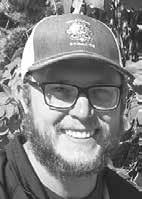
We started planting corn again May 14 and finished our last 160 acres that day. We finished planting soybeans May 15. We have to wait to start hay until the wet weather passes. Ideally, we would’ve started May 20, but it was raining and windy. Now, the hay is all laying down. It’s tall, really nice stuff, but it might be slow going with the weather we’ve had. There are a lot of Haybines in driveways in the area waiting to get going. Our corn and beans look nice. We’ve had ample moisture to get them to germinate. I could not be happier with the way things look right now.

We have good soil moisture on the top and are slowly catching up. We have all of our corn-on-corn ground planted. We have 150-200 acres that currently has alfalfa that will be chisel plowed and then planted to corn. In the area, there are a lot of farmers getting wrapped up with planting. Most of the crop farmers are done, but those with cattle are still going. We started hay May 18 because we have spring black stem and leaf spot fungus in our fields. It is in all the hayfields around here. We have about 60 acres down. If we harvest it, the agronomist said we should not have to spray.
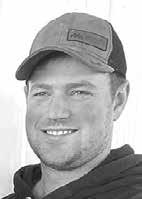
We got about 3 inches of rain yesterday (May 21), and that is all we’ve had for the past two weeks. We finished everything about midnight Monday night. We got all our corn and soybeans planted in about six days. Our hay and triticale are ready, but it will probably be the middle of next week before we can get to it, if we get no more rain. Everything is pretty wet here. This spring is the first time in six years we haven’t had to pump water for irrigation.
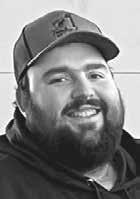
We got about 2 inches yesterday (May 21), making 2.9 inches total for the past two weeks. We are done planting until the rye comes off. We will put corn in behind that. I would say our area is about 95% complete for planting. We will start rye and hay as soon as it dries out enough. They look phenomenal. It is one of the best crops we’ve had in recent years.
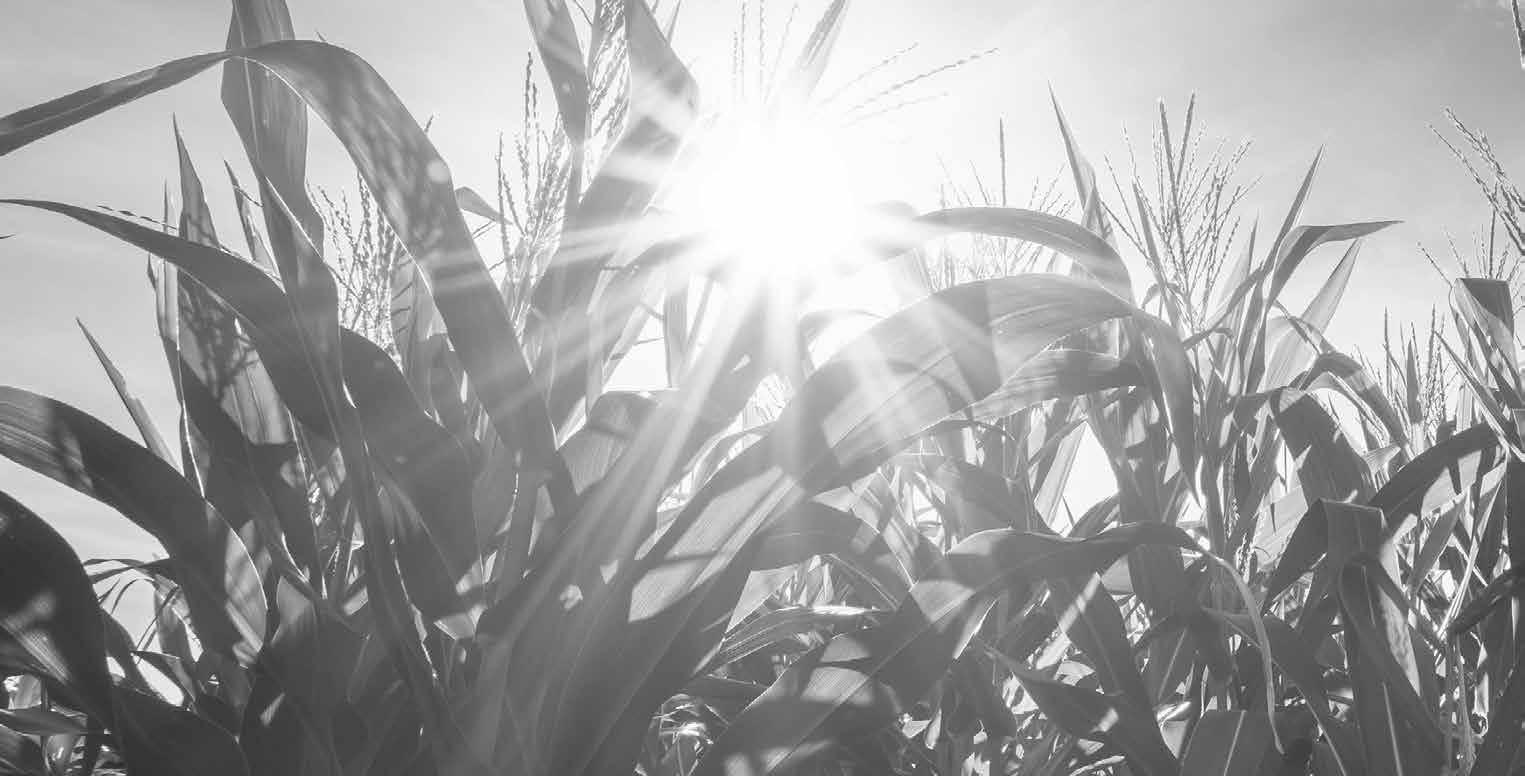
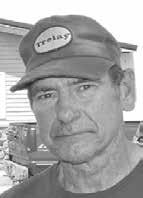
Daryl started planting soybeans May 16, and we finished May 19. We have 18 acres of corn left to plant. The ground is soft and mushy, and it’s been cloudy, so it hasn’t been able to dry down. Our hay has probably doubled in height within the last four days. The bromegrass is up to my waist. We’re going to start cutting hay as soon as it dries up. We put cows on pasture May 17, and they loved it. A lot of people in the area are done planting corn and soybeans, and there’s a lot of corn that’s up.
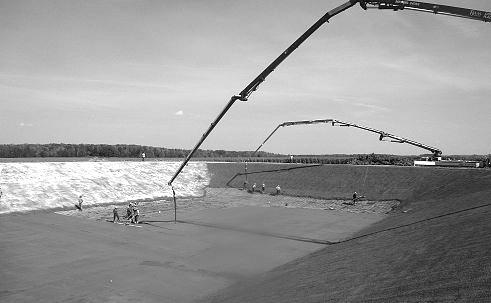
Tell us about your family’s farm. I come from a smaller farm where my younger siblings and I own registered Holsteins and Jerseys. My dad and mom have grade Holsteins. We milk almost 55 cows twice a day in a tiestall barn. A few years ago, my siblings and I decided we wanted to start growing our own herd with registered dairy cattle. From then on, we have been growing a herd and working on having good genetics.

What are your responsibilities on the farm? Milking the cows alongside my mom while also helping my siblings with calf chores like feeding the calves milk and grain.
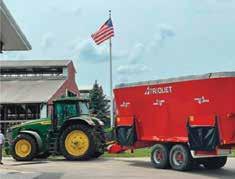

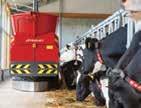
What is your favorite memory of living on a dairy farm? The early mornings and late nights in the barn with my family. I love the fact everyone in the family is involved between the cows, eldwork and general farm work. That makes me happy. My younger siblings are getting involved with something that is a growing industry and operation.
What lessons have you learned from living on a dairy farm? Having a good work ethic and always nding a solution when something you didn’t expect to happen ends up happening.
What are your plans going forward? I will attend Northeast Wisconsin Technical College in Green Bay, Wisconsin, to study dairy science. I will then attend a four-year college to pursue a degree in agricultural education to one day be an agricultural teacher and FFA adviser.
Emma Fischer
Parents: Darrel and Nikki Fischer
Sleepy Eye, Minnesota

Tell us about your family’s farm. I work on my grandparents’ farm, Riverside Dairy. We milk 75 Holstein- Jersey crossbreds in a stanchion parlor. My grandparents, Gary and Rosie Hillesheim, and aunt, Stacy Tauer, are the main operators of the farm, but the whole family helps.
What are your responsibilities on the farm? My responsibilities include milking, feeding claves, raking, basic maintenance and pretty much the rest of the jobs that come along with working on the farm.
Porter Kuechle
Parents: Perry and Sarah Kuechle Eden Valley, Minnesota
Tell us about your family’s farm. We milk 215 cows in a double-12 herringbone parlor. We also raise our youngstock and steers, and we farm roughly 900 acres.

What are your responsibilities on the farm? I milk cows, feed, operate equipment and do maintenance on equipment.
What is your favorite memory of living on a dairy farm? Chopping silage alongside my grandpa and dad.
What lessons have you learned from living on a dairy farm? The value of hard work and passion in what you do.
What are your plans going forward? To go to school at Ridgewater College for farm operation and management and hopefully learn new skills to bring back to the farm.
Lindsey Rotz Parents: Paul and Carolin Rotz Pelican Rapids, MinnesotaTell us about your family’s farm. I live and work on Twin Oaks Dairy. We milk 65 cows in a onerobot freestall barn. My parents, siblings, uncle and aunt, cousins and grandparents all do their part on the farm.

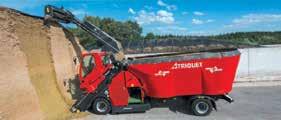
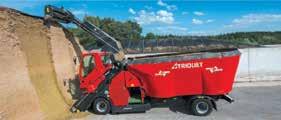


What is your favorite memory of working on a dairy farm? I love what I do on the farm. Every day, I go to the farm and work with people I love, like Stacey, Papa Gary and Grandma Rosie. With that being said, my favorite memory is baling or picking up rocks. As they aren’t enjoyable jobs per say, we are all together as a family. We get to have fun conversations and sing on the rack while unloading. It’s the feeling of being surrounded by people I love, working for the same goal: to keep farming alive.
What lessons have you learned from working on a dairy farm? The biggest lesson I have learned from working on the farm is work ethic. Just because I am tired or the sun is setting does not mean our responsibilities are done for the day.
What are your plans going forward? I plan to attend Ridgewater College for a degree in agriculture business.
What are your responsibilities on the farm? I feed and water various ages of cattle, articially inseminate cows and heifers, and clean and bed cattle pens. My favorite chore is moving cattle to different pens and watching them prance and jump through the straw exploring their new pen.
What is your favorite memory of living on a dairy farm? I successfully articially inseminated a cow, and she had a heifer that I named.
What lessons have you learned from living on a dairy farm? I have learned the value of hard work in every situation. The feeling of satisfaction after completing a hard task is amazing. There is something amazing about scooping the last bit of straw out of a dirty pen and putting my fork away and knowing that when I get up to the house, I can nally eat lunch.
What are your plans going forward? I will attend South Dakota State University to major in animal science and earn my bachelor’s degree. Then, I want to be accepted to a veterinarian school to become a large animal veterinarian.
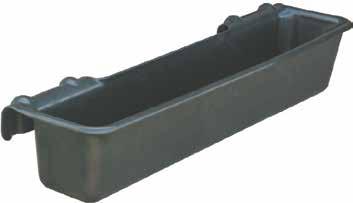
Durable and ts over most fences

 Renae Evers Parents: Jerry and Tammy Evers Kellogg, Minnesota
Renae Evers Parents: Jerry and Tammy Evers Kellogg, Minnesota
Tell us about your family’s farm. We milk about 3,000 Holstein cows in a double-48 parallel parlor. My farm is run by my dad and his three brothers as well as all their families.
What are your responsibilities on the farm? I merge hay, pack silage, bale cornstalks, clean the reused sand every day for bedding, scrape the barn, take care of my pet goats, treat sick cows with my cousin, Allie, feed and bed heifers, mow lawn, haul manure, gather bales in the fall, cover silage piles and more. My favorite job is merging hay in the summer and baling in the fall.
What is your favorite memory of living on a dairy farm? When my dad taught me how to bale for the rst time. I was riding with him one fall, and he told me to sit in the driver’s seat. I was very nervous, but he showed me how to read the monitor and run it. Now, I’m running the baler by myself because of him.
What lessons have you learned from living on a dairy farm? “If it was easy, everybody would do it,” as my dad always says. Some days are tougher than others, but it’s always worth it. Sometimes I nd myself wondering if this is what I want to do for the rest of my life, and the answer was always yes. No matter how hard or how long the days can be, I love what I do.
What are your plans going forward? I plan to stay on the farm after I graduate.
Matthew Boeder Parents: Karl and Stephanie Boeder Kewaunee, Wisconsin

Tell us about your family’s farm. I am part of two family farms: my parents’ farm, AyrJer Farm, and my grandparents’ farm, Orru-Acres. I grew up on a dairy farm. We raise Jerseys, Ayrshires, Holsteins and Milking Shorthorns. The farm where the cattle are housed is a stall barn, and we milk about 30 head. I also work at Hall’s Calf Ranch, driving a route truck.
What are your responsibilities on the farm? I work with show cattle and help with feeding, cleaning and working in the elds. My favorite job is working in the elds.
What is your favorite memory of living on a dairy farm? We had a cow named Candy, and when I was little, I would ride her around like a horse.
What lessons have you learned from living on a dairy farm? The biggest lesson with working and living on a farm that has any type of cattle is learning that there is a challenge every day. If there isn’t, you are not farming.
What are your plans going forward? My plans are to continue showing dairy cattle and working at the family farm and the calf ranch while nishing my degree as a heavy diesel technician.
 Katrina Schutz
Parents: Jason and Jenny Schutz Eden Valley, Minnesota
Katrina Schutz
Parents: Jason and Jenny Schutz Eden Valley, Minnesota
Tell us about your family’s farm. On our century dairy farm, we milk 100-110 cows twice a day in a single-15 parallel parlor. My dad, Jason, manages the farm and receives a helping hand from my mom, Jenny, two sister, Kendra and Jordyn, and myself. We also receive help from neighboring farm friends when need be.
What are your responsibilities on the farm? In the summertime, I feed calves morning and night. I also help my dad milk cows a couple times a week. Although I tell him otherwise, milking cows with my dad every Sunday morning is my favorite chore. We catch up on our week and make jokes with each other in the barn.
What is your favorite memory of living on a dairy farm? The rst time I helped my dad load bails from the eld. He would retrieve the bails with the skid loader and wait for me to pull the trailer up perfectly next to him. I would joke and pull too far ahead so he’d have to adjust. We had a good few laughs.
What lessons have you learned from living on a dairy farm? I learned responsibility being a part of a farm. You can’t be late to chores, and you denitely can’t skip them. The cows depend on you, and that’s important.
What are your plans going forward? I will attend Minnesota West Community and Technical College to play basketball and get an Associate of Arts degree in liberal arts. My plans after that lay somewhere in sports medicine.





Contact
to learn more about
Megan Mosgaller
Parents: David Mosgaller and Tammy Winkelman Iron Ridge, Wisconsin
Tell us about the farm you work for. I work on a dairy farm as well as own a herd of show dairy goats. I work on Kresent Valley Dairy where we milk 150 Holsteins and Jerseys. I have the pleasure of working alongside the Jones family and classmates. We milk 16 cows at a time in a at parlor. It takes 2.5 hours and two people. We own around 50 Toggenburgs, Alpines and Nubians. I work with my mom, grandma and grandpa. In the show ring, I work with my cousin, Abby, to prepare and clip all of the does that we sign up for shows across the Midwest.
What are your responsibilities on the farm? I am deemed as a milking technician. I am responsible for cleaning the milkhouse and scraping the parlor. I help with breeding and sorting cows as well as routine medication/treatments. My favorite task on the farm is taking care of fresh cows with Kristin, my boss. Kristin and I always seem to have something to talk about, making everything more fun, and taking care of the fresh cows is always a rewarding task. On my farm, I am responsible for daily chores including feeding and milking. During show season, I am responsible for clipping, transporting and registering does. During kidding season, I work with my mom to ensure all of my does freshen without complications and all of my kids are fed properly. My favorite task is the rst clipping of the year before show season. It shows me how much my does have grown over the winter and how my youngstock have matured.
What is your favorite memory of working on a dairy farm? My favorite memory was the rst day of my senior year. I am involved in a school-to-work program, so on the rst day of school, it was a work day. Kristin and I had gotten done with the rst group of cows, and everything had gone rather smoothly. All of a sudden, Charlie called and said the four words most farmers dread, “The cows are out.” Kristin and I went outside to see most of the herd wandering around. It took us 45 minutes to round up all the cows. I will never forget the rst day of my senior year.
What lessons have you learned from working on a dairy farm? I learned responsibility, time management and more skills regarding animals’ welfare. I can’t express enough how much skill one can obtain from raising animals. My favorite quote about the performance animal industry is, “We’re not just raising animals, and if we were in it for the money, we would have quit a long time ago.”
What are your plans going forward? I plan to attend the University of Wisconsin-River Falls to major in dairy science with an emphasis on veterinary medicine and a minor in Spanish. I hope to go to Iowa State University or UW-Madison for veterinary school. I hope to become a large animal veterinarian and open my own practice. During my undergraduate, I want to be an intern at Select Sires.
Rylan Bruins
Parents: Joel and Tonya Bruins Alto, Wisconsin

Tell us about your family’s farm. Homeland Dairy is a multi-generational farm located in southwest Fond du Lac County. Our farm is owned by my mom and dad, my uncle, Jon, and aunt Michelle, and my cousin, Jake, and his wife, Myah. We milk 700 cows in a double-10 parallel parlor three times a day. We haul our milk every day to Saputo.
What are your responsibilities on the farm? I am responsible for scraping barns on Saturday and Monday mornings. Once I graduate, I will be helping with everything on the farm. I especially enjoy driving tractors and maintaining our farm’s equipment.
What is your favorite memory of living on a dairy farm? My favorite memory is when I was nished with rst grade, I rode in the tractor with my dad and in the chopper with my grandpa for a total of 14 hours, from about 8 a.m. until 10 p.m. when we were pushing to nish the hay before the rain. I eventually was forced to leave the tractor when my mom wanted me to go to bed.
What lessons have you learned from living on a dairy farm? Communication is important. Without communicating, it is hard to know what to accomplish in a day and where other coworkers are. Communicating with your coworkers makes everyone happier.
What are your plans going forward? I plan to attend Fox Valley Technical College for agribusiness so that I can take over running the books for my dad. After college, I plan to buy into the farm and purchase land. I intend to continue working on the farm for the rest of my life.
Lydia Nachreiner
Parents: Curt and Lisa Nachreiner
Fairfax, Minnesota
Tell us about your family’s farm. I work on my family’s dairy farm that is owned by my grandma Janet, uncle Chris and father Curtis. We milk 300 cows in a double-10 parlor.

What are your responsibilities on the farm? My responsibilities on the farm include milking and back of barn shifts, which include bringing cows up to the parlor, cleaning stalls and pens while the cows are milking, and occasionally feeding calves. My favorite job is cleaning the pens because it is peaceful and relaxing.
What is your favorite memory of living on a dairy farm? Some of my favorite memories of working on my family’s dairy farm are snowstorms and holidays where my siblings, parents and I all worked together to complete the milking shifts. This allowed the other employees to spend the holidays with their families.
What lessons have you learned from living on a dairy farm? Having a good work ethic and always pushing myself to be the best employee I can.
What are your plans going forward? I will be attending college to pursue an Associate of Applied Science degree in radiologic technology. I plan to work as a technician as I continue my education in imaging.
Ava Miller Parents: Russell and Amanda Miller Winthrop, Minnesota
Tell us about the farm you work for. I have been employed as a milk technician at Nachreiner Dairy LLC, near Fairfax, Minnesota, for a couple years now. It is managed by brothers, Curt and Chris, along with their mom, Janet. Curt’s wife, Lisa, manages the barn and employees. It is a job that has been very exible around my education.
What are your responsibilities on the farm? My role at the farm is to set up the parlor when rst arriving. This includes having towels folded, setting up the milk buckets and reading the board to see if there are any cows that need to be sorted out or treated.
What is your favorite memory of working on a dairy farm? My favorite memory would have to be working with coworkers, jamming to music and the laughs and fun we have as we work.
What lessons have you learned from working on a dairy farm? I have learned many things working at Nachreiner Dairy. Problem solving is one of the biggest ones. Finding another way to do something when the other isn’t working. Working at the dairy, I have found many ways to do something differently. Along with that, I have learned so much more about the animals I have been working with the last few years.
What are your plans going forward? Once I graduate, I plan to go to college to get an Associate of Science degree in nursing and a Bachelor of Liberal Arts degree. I plan to work at a hospital in a pediatric intensive care unit. After working as a registered nurse, I want to go to school to get a Bachelor of Science in Nursing.
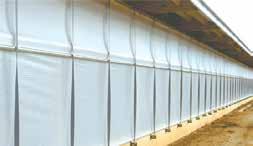
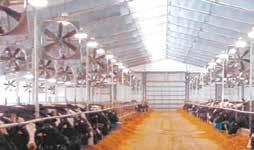
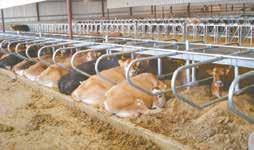
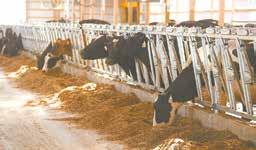
Brennir Peterson
Parents: Daryl and Marilee Peterson Gibbon, Minnesota

Tell us about the farm you work for. I work for Nachreiner Dairy, which is a dairy farm located in Renville County near Fairfax, Minnesota. They are a family farm that milks around 250 cows.
What are your responsibilities on the farm? My job includes pushing up the cows and cleaning and bedding the pens.
Lincoln Werner
Parents: Wade and Jennifer Werner Gibbon, Minnesota

Tell us about the farm you work for. As an employee of Nachreiner Dairy, I help milk around 300 cows and make sure the back of the barn is clean. Every shift, I work with two people. Everyone has their own duty that has to fullled. Nachreiner Dairy has always been a great working environment. Everyone is always nice and cooperative.
What are your responsibilities on the farm? My responsibilities are making sure the back of the barn is clean and helping milk the cows. One of my favorite chores in the barn is cleaning the holding pen.
Calley Ruesch
Parents: Dave and Becky Ruesch Abbotsford, Wisconsin

Tell us about your family’s farm. I farm with my family, but now it’s mainly my parents, Dave and Becky. Before my brother, Logan, graduated from college, he would help when he was home and while in high school. Mya, my sister, also helped when she was in high school. She occasionally helps when she is home from college. We milk 140 cows in a double-9 parlor twice a day.
What are your responsibilities on the farm? Since I am a three-sport athlete and not home to help during evening chores, I get up in the morning. I help wherever is needed, whether it’s milking, feeding calves, scraping and bedding the freestall barn, or moving cattle. I have also helped by driving a tractor during tillage work.
What is your favorite memory of working on a dairy farm? My favorite memory would be just talking with the other employees and working with the livestock.
What lessons have you learned from working on a dairy farm? A big lesson I have learned is hard work, and I have also gained a great passion for livestock.
What are your plans going forward? I will attend the University of Minnesota to major in animal science with a minor in agricultural business.
What is your favorite memory of working on a dairy farm? My favorite memory of working on the dairy was working Christmas morning during the massive snow storm in 2022.
What lessons have you learned from working on a dairy farm? First of all, the hardest part about working a morning shift is getting out of bed. Second, teamwork goes a very long way. It can make or break the day. Finally, don’t mess around with the heifers. They can be scary.
What are your plans going forward? I plan on attending Advanced Welding Institute in Eagle River, Wisconsin, for the six-month structural and pipe welding classes. I plan on becoming a traveling pipe welder for a few years and then stick around somewhere closer to home.
What is your favorite memory of living on a dairy farm? Since I have been a toddler, I have loved helping my dad on the farm, and up until I was 12, I would have told you I was going to take over our farm. When I was about 2, I knew every single cow’s name. When a new cow would come into the barn, I would ask my dad what a cow’s name was for about a week, and then, I could remember her.
What lessons have you learned from living on a dairy farm? I have taken on more responsibilities and had to learn that if I want something, I need to work for it. Working from a young age has instilled value and hard-working skills. Not everything gets handed to you, but with a little extra work and time, you can get what you worked for. It has helped me prepare for the future to take ownership and have great responsibility.
What are your plans going forward? I am going to attend the University of Wisconsin-Green Bay. I am double majoring in public relations and sports communications.





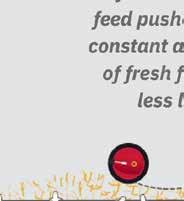


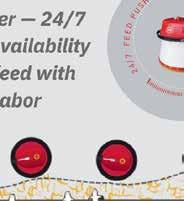





RICHMOND, Minn. — Rocks were picked across 34 acres May 15 when a team of 12 workers descended upon the dairy farm of Pat and Nancy Linn and their son, Tanner, near Richmond.
As Pat and Tanner each drove a tractor, eight employees of Magni Financial of Sauk Centre as well as four Dairy Star staff members supplied hard labor as part of an annual drawing co-sponsored by the two businesses.
Pat Linn received a call from KASM radio personality Joe Gill, who announced that the Linns had won the contest. The date was set, and the rock pickers showed up at noon. Linn said he appreciated the hard work done by the team.
“They did a great job, and we got a lot more rocks picked than I had expected,” Linn said. “It went fast, and I was very impressed. They couldn’t have done any better.”
The Linns milk 150 cows, raise youngstock, and feed out and nish their bull calves. They grow crops on 313 tillable acres of the 428-acre farm
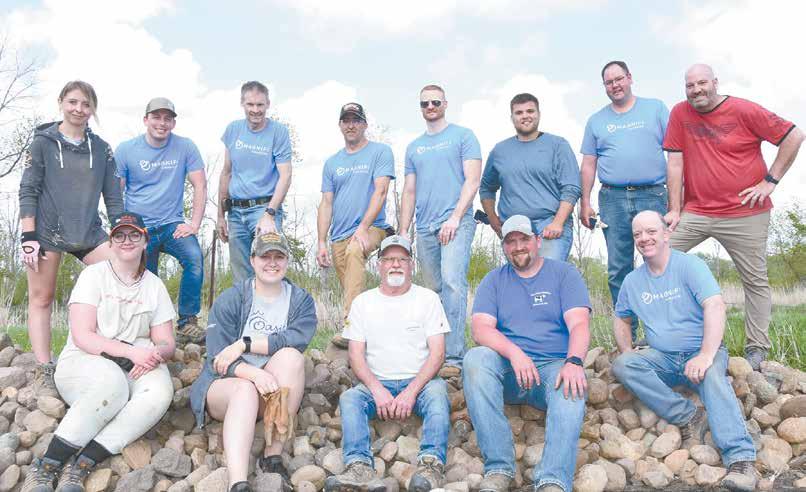
and rent another 200 acres.
Dale Job, a commercial banking ofcer for Magni Financial and member of the
rock-picking team, agreed that the day was a success. The task took about four hours.
“Everything went well,



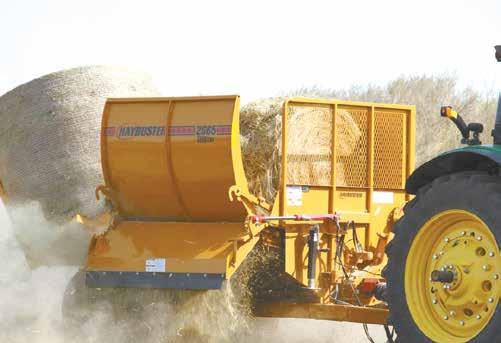
the heavy-duty rotor and hammers process the material. The 2665 Shortcut Balebuster also comes with more hammers, more stripper kits, and more slug bars giving you additional cutting and ultimately a shorter product.
and the weather was great,” Job said. “We covered a lot of acres.”
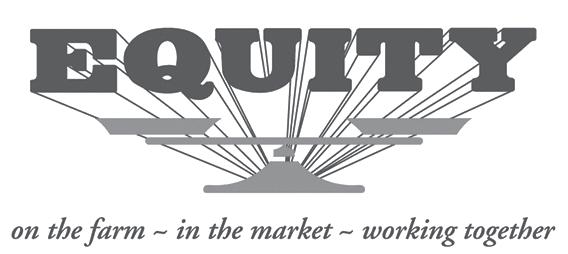
to ROCK
The annual rock-picking event has become a staple for both Magni Financial and Dairy Star.
“It’s been an ongoing event with Dairy Star for over 20 years as part of our continued commitment to the dairy industry and agriculture in general,” Job said.
This year’s rock-picking team from Magni Financial also included Lucas Theis, Todd Bussmann, Evan Welle, Kevin Uphoff, Andy Welle, Corey Sand and Tony Roggenbuck. The Dairy Star group was made up of editor Mark Klaphake and three members of Star Publications’ art and production team: Annika Gunderson, Nadia Zalitach and Cheyenne Middendorf.
Although Klaphake and Gunderson have experience in picking rocks, the rest of their team did not.
“It was my rst time picking rocks, which is kind of funny since I married into a farming family, but I didn’t think it was too bad,” Middendorf said. “It was Nadia’s rst time picking too. She already signed up again for next year and said that everyone should do it at least once in their life.”
Middendorf said the weather helped make the day pleasant.
“Whenever it got relatively warm, there was a beautiful breeze to cool us off, so none of us seemed to be overheated at all,” Middendorf said. “In the hill areas, there were a ton of rocks, so every hour we had two trailer loads full that needed to get dumped. Our highlights were nding a little frog, a baby eld mouse, a golf ball and a baseball and getting a sick tan.”
When the task of the day was completed, the rock pickers were invited to relax in a shed that the Linns recently remodeled into a gathering space for meetings and celebrations. The Linns served a meal to thank the team for their hard work.
“Once getting back, our hosts were very sweet and made sure we all got drinks, food and a dessert,” Middendorf said. “The burgers and brats were amazing. It felt great to end the workday with a nice treat and some good company.”
Linn said he, too, enjoyed spending time with his new workforce.
“It’s nice talking with people who I’ve never met before,” Linn said. “It was an excellent day.”

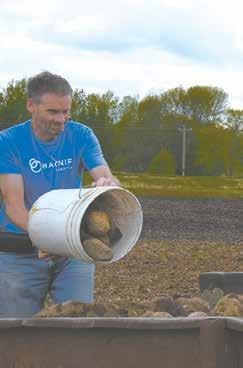

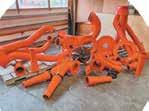






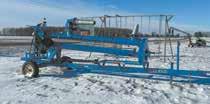

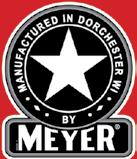












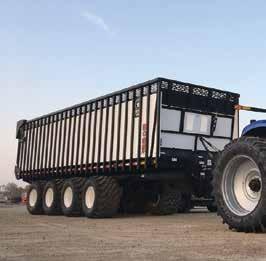

2 teaspoons butter
2 cups sliced white button mushrooms
1/2 cup sliced green onion, including green tops
6 slices country style bread, cubed
2 cups shredded cheddar cheese


2 cups fat-free or low-fat milk, can substitute lactose-free milk
2 cups egg substitute
1 teaspoon red or green hot pepper sauce
1/4 teaspoon salt, optional


Spray an 8-by-8 square glass or ceramic baking dish with cooking spray; set aside. In a medium skillet over medium heat, melt butter and add mushrooms. Cook mushrooms about 5 minutes or until softened and brown at edges. Stir in green onion; set aside. Place 1/2 of the bread cubes in prepared baking dish. Scatter 1/2 of the mushroom mixture and 1/2 of the cheese over bread cubes. Layer remaining bread cubes and mushroom mixture; set aside. In a large bowl, beat milk, egg substitute, pepper sauce and salt, if desired, until well blended. Pour milk mixture over bread cubes and top with the remaining cheese. Make ahead suggestion: cover dish with foil and refrigerate for 8-10 hours before baking. Preheat oven to 350 degrees. Bake, covered for 45 minutes. Remove foil and bake an additional 15 minutes or until top is puffed up and cheese is browned at edges. Let cool for 5 minutes; cut into squares to serve.



15 ounces peach slices in juice
8 ounces pineapple chunks in juice
2 kiwis, peeled and chopped
1 cup strawberries, chopped


2 tablespoons brown sugar
1/4 teaspoon ground cinnamon
1/4 teaspoon ground ginger
32 ounces non-fat vanilla yogurt



Drain peach slices, discarding juice. Drain pineapple chunks, reserving juice. Chop peaches and pineapple. Toss peaches, pineapple, kiwi, strawberries, brown sugar, spices, and reserved pineapple juice in a medium bowl. Layer 1/2 cup yogurt with 6 tablespoons of fruit salsa in each of eight parfait glasses or dessert dishes. Serve immediately.



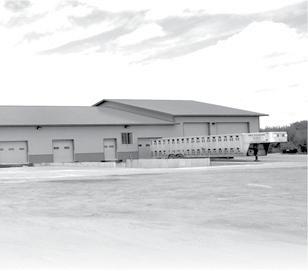






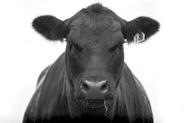

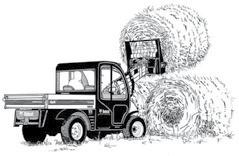


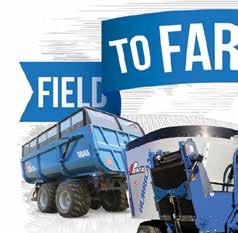

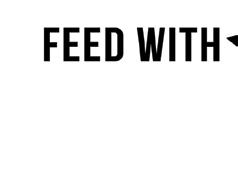
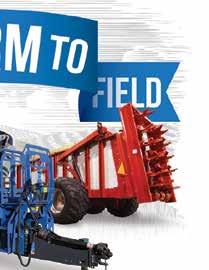
The Penta line of Dump Trailers are designed to get your crop from the field to your farm. Ranging in size from 1050 Cubic feet to 2475 Cubic feet there is one ready for you. Farmer focused features like better visibility in the box and the unique reverse tilt for better filling, all built as tough as you.
The best quality feed needs the best quality mix. Penta TMR Mixers are designed, tested and farm proven to deliver the best mix on the market. Our Hurricane Auger allows forage to circulate faster through the mix for quicker processing and mixing times.

The Penta (Hagedorn) line of Manure Spreaders allows you to make the best use of your organic nutrient resources. The Hagedorn Spreaders processes the manure finer with the best spread pattern. This lets your field make better use of this rich resource.


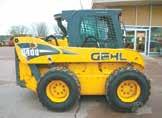



‘15 Gehl R220, JS Ctrls, Dsl, 2500 Lift Cap, C/H/ A, 2 Spd, Hydra Glide, 3,125 hrs...............................................$36,250
‘21 Gehl V330, JS Ctrls, Dsl, 3300 Lift Cap, C/H/A, 2 Spd, Hydra Glide, 1224 hrs ...$53,900
‘18 Gehl RT165, JS Ctrls, 69HP Dsl, 15” Tracks, 2000 Lift Cap, C/H/A, 2 Spd, 1103 hrs................................................$44,900
‘19 Gehl RT165, ISO/JS Ctrls, Dsl, 15 1/2
All Season Tracks, Lift Cap 1800 @ 35% And 2400 @ 50%, C/H/A, 2 Spd, 1,758 hrs. $41,750
‘17 Gehl RT250, ISO/Dual H-Ctrls, Dsl, Camso Tracks HXD 450x86x58, Both Standard And Hi-Flow Hyd, 2 Spd, Hydra Glide, 295 hrs, Warranty Till 6-30-26 or 1000 Hrs ...........................................$48,500
‘22
Gehl RT215, ISO/JS ctrls, dsl, square bar 17” tracks, 3000 lift cap at 50%, C/H/air, 2 spd, Hydra Glide, 1396 hrs ...............$51,500
‘17 Gehl V270, ISO Ctrls, Dsl, 2700
Lift Cap, C&H, 2 Spd, 3,950 hrs ...........$40,500
‘18 Gehl R220, JS Ctrls, Dsl, 2200 Lift Cap, SS, 4,600 hrs ........................................$23,000
‘17 Gehl R220, H-Ctrl, Dsl, 2500 Lift Cap, C&H, 2 Spd, 4635 hrs ..................$28,500
‘22 Gehl R220 T-Bar H-Ctrls, 2500 Lift Cap, C&H, 2 spd, 4012 hrs ..................$38,800
Gehl R190, Dual-H Ctrls, Dsl, 2150 Lift Cap, C&H, 2 Spd, 6,130 hrs..........................$22,500
‘21
Gehl R150, T-Bar Ctrls, Dsl, 1650 Lift Cap, C&H, 1,965 hrs ............................$31,900
‘22 Manitou 1650RT, H/Ft Ctrls, Dsl, 12” Tracks, 1650 Lift Cap, C/H/A, 2 Spd, 169 hrs..................................................$56,500
‘21 Manitou 2700V NXT:2, H-Ctrls, Dsl, 3000 Lift Cap, Dsl, C/H/A, 2 Spd, Hydra Glide, 1,850 hrs ....................................$47,700
‘20 Deere 332G, ISO/Dual H-Ctrls, Dsl, 3600 Lift Cap, C/H/A, 2 Spd, 975 hrs ..$61,000
‘06 Bobcat MT52 standon ldr., 20HP dsl, tipping load 1600 lbs, standard auxiliary hyd, 411 hrs..................................................$19,500
‘17 Case SV280, Switchable ISO/Dual H-Ctrls, Dsl, 2800 Lift Cap, Hi-Flow, C/H/A, 2 Spd, 360 hrs. .........................$55,500








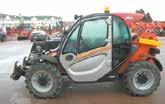
‘17 Kuhn Knight SLC132, 425 Tires, 3200 Gal ..........................................$36,500 ‘17 Kuhn Knight 8124, 19L X 16.1 Flotation Tires, 2400 Gals, 500 Bu, Frt & Rear Splash Guards, Low Usage .........................$34,500 ‘23 Kuhn Knight PS280, Accuspread Spinner Beater (Litter), Athne Scales-ISObus, Light Kit, Headland De ector, Auto Chain Oiler ...............................................$116,000 Kuhn Knight SLC141, 28L-26 Tires, 4100 Gallons ...................................$47,000 ‘11 H&S 5126, 2600 Gallons, 347 Cu Ft$8,900 ‘13 H&S 430,11L X 22.5 Truck Tires, Upper Beater, Endgate, T-67 Chain, 1000 And 540 PTO Options ......................................$12,700 ‘15 Hagedorn Hydra-Spread Extravert 5440, 684 Cu Ft Heaped, 440 Cu Ft Struck, Sequence Valve Flow Control, Wood Rails, Stone Guard, Endgate .....................$41,500 ‘12 Hagedorn Hydra-Spread Extravert 5440, 684 Cu Ft Heaped, 440 Cu Ft Struck, Sequence Valve Flow Control, Wood Rails, Stone Guard, Endgate .....................$39,500
NH 185, 170 Struck Cu Ft, 275 Bu, Upper Beater, T-Rod 67 Apron Chain, Poly Floor, End Gate .........................................$12,900 ‘19 DODA AFI-35, 1 3/8 1000 PTO, 6”.....$7,500 ‘22 Artex SBX800, 848 Cu Ft Heaped, 88C Pintle Chain, Guillotine Endgate, Apron Chain Relief Valve ........................................$61,500
‘21 Artex SBX700, 726 Cu Ft, Guillotine Endgate, 88C Apron Chain With Tube Slats, Twin Vert Beater...............................$53,500 ‘21 Artex SBX700, 726 CuFt, Guillotine Endgate, 88C Apron Chain W/Tube Slats, Twin Vert Beater .........................................$57,900 Meyers

600 Bu, 482 Cu Ft
Vert Beaters, 5 Pt Digi Star Scale, Nutra Tracker NT Scale Head, No GPS Puck Included ...........................................$46,500


